 |
Public C++ Seminars:Preface |
| Introduction to Objects:The progress of abstraction, Extreme programming >> |
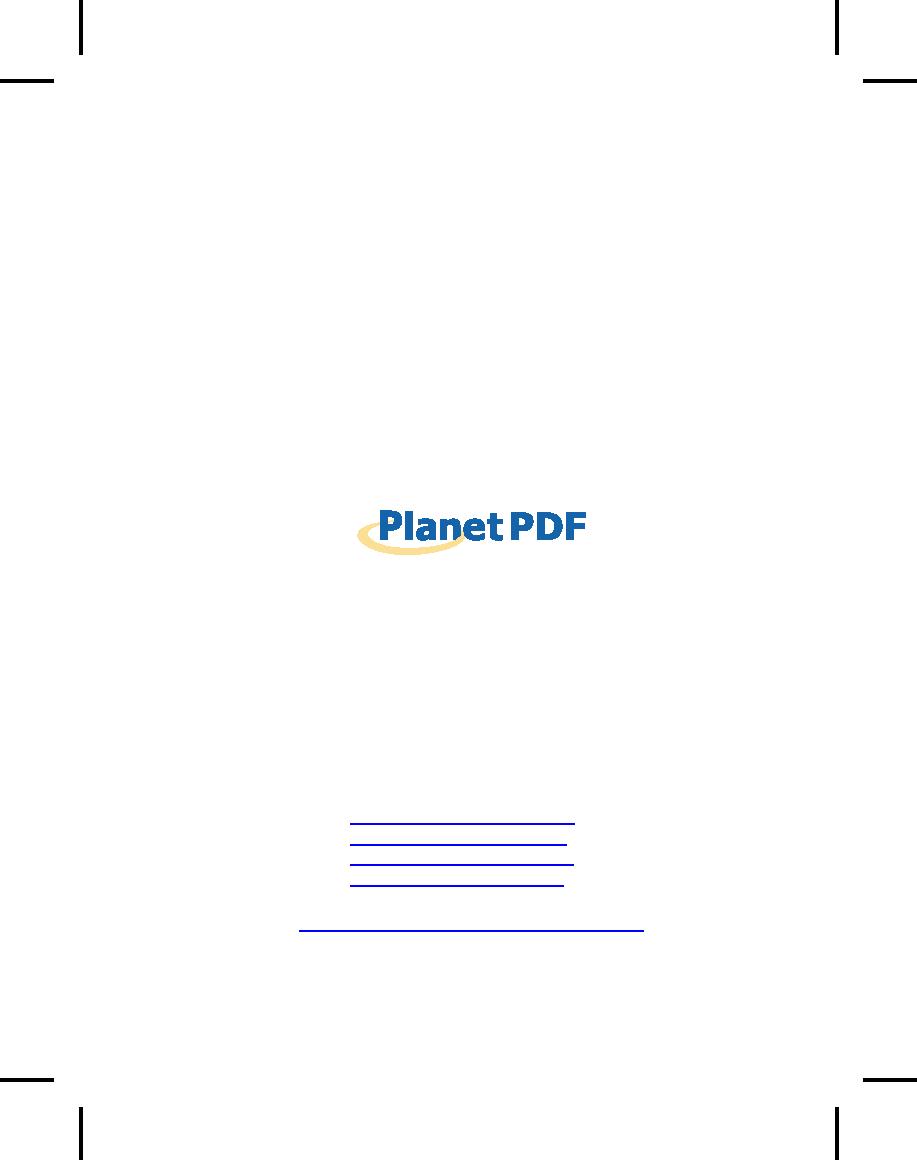
Thinking
in C++,
Volume
1, 2nd Edition
Completed
January 13, 2000
Bruce
Eckel, President,
MindView,
Inc.
Planet
PDF brings you the Portable
Document
Format
(PDF) version of Thinking in C++
Volume 1
(2nd Edition). Planet PDF is the
premier PDF-
related
site on the web. There is
news, software,
white
papers, interviews, product
reviews, Web
links,
code samples, a forum, and
regular articles
by
many of the most prominent
and respected PDF
experts
in the world. Visit our
sites for more
detail:
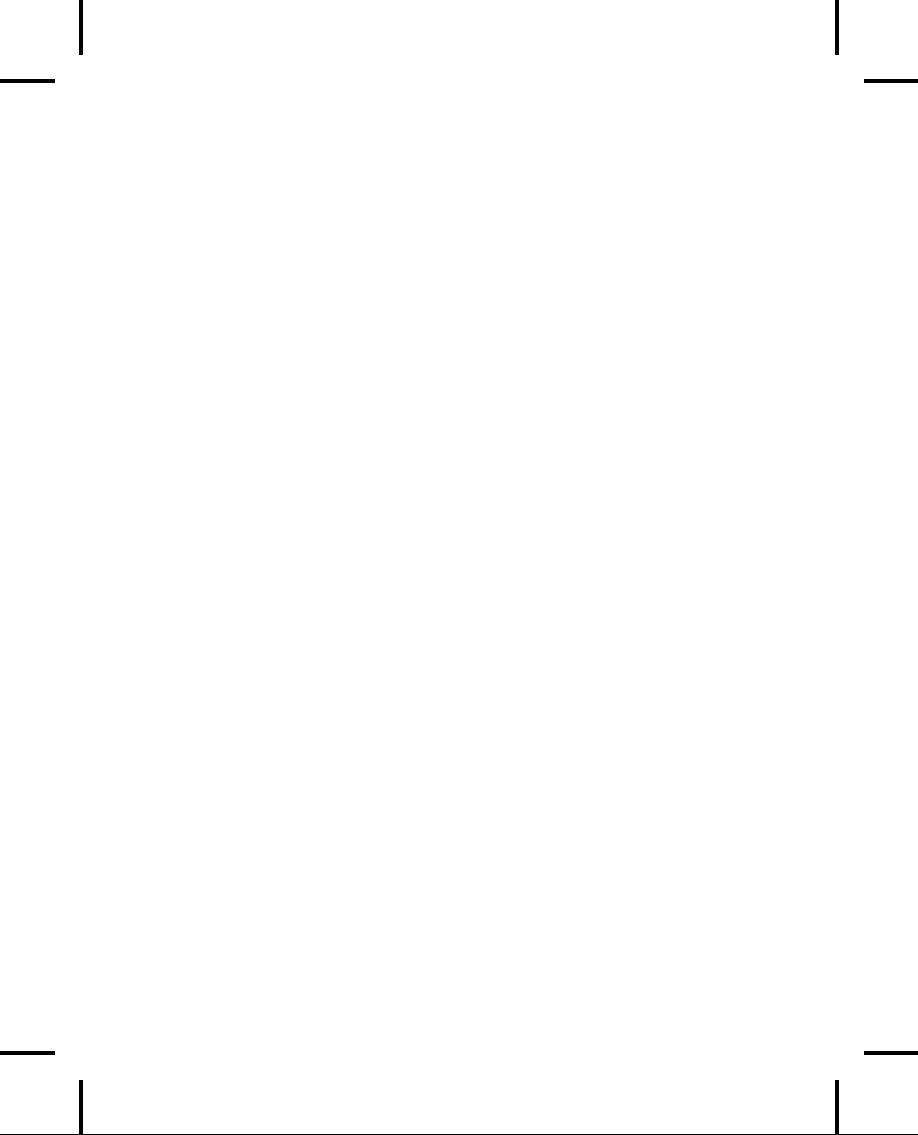
Winner,
Software Development Magazine's
1996
Jolt Award for Best Book of the Year
"This
book is a tremendous achievement. You owe
it to yourself to
have
a copy on your shelf. The
chapter on iostreams is the
most
comprehensive
and understandable treatment of that
subject I've
seen
to date."
Al
Stevens
Contributing
Editor, Doctor Dobbs Journal
"Eckel's
book is the only one to so
clearly explain how to
rethink
program
construction for object orientation. That
the book is also
an
excellent tutorial on the
ins and outs of C++ is an added
bonus."
Andrew
Binstock
Editor,
Unix Review
"Bruce
continues to amaze me with his
insight into C++, and
Thinking
in C++ is his
best collection of ideas
yet. If you want clear
answers
to difficult questions about
C++, buy this
outstanding
book."
Gary
Entsminger
Author,
The Tao of Objects
"Thinking
in C++ patiently
and methodically explores the
issues of
when
and how to use inlines, references,
operator overloading,
inheritance
and dynamic objects, as well as advanced
topics such as
the
proper use of templates,
exceptions and multiple
inheritance.
The
entire effort is woven in a fabric
that includes Eckel's
own
philosophy
of object and program design. A must for
every C++
developer's
bookshelf, Thinking
in C++ is the
one C++ book you
must
have if you're doing serious
development with C++."
Richard
Hale Shaw
Contributing
Editor, PC Magazine
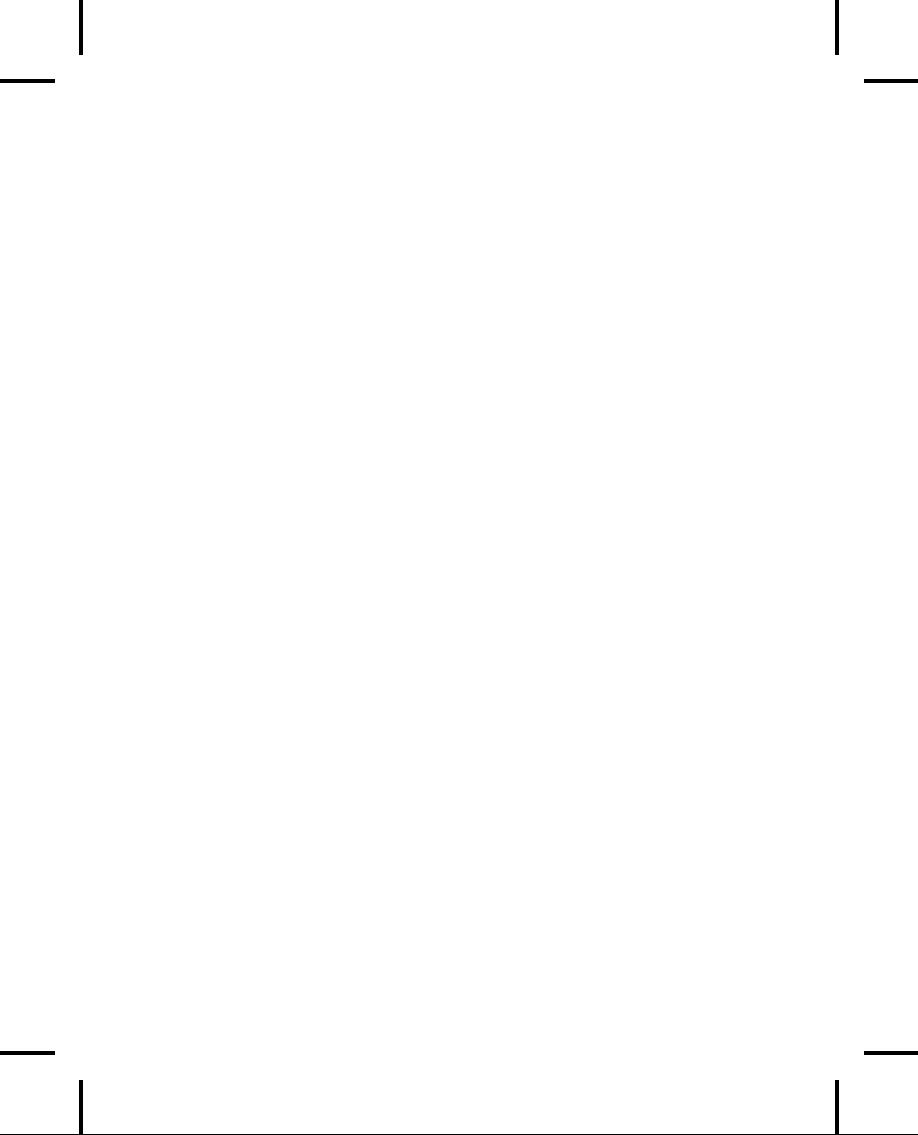
Comments
from Readers:
Wonderful
book ... Great stuff! Andrew
Schulman, Doctor Dobbs
Journal
An
absolute, unqualified must.
One of the most-used, most
trusted books on my
shelf."
TUG
Lines
This
is stuff a programmer can
really use. IEEE
Computer
A
refreshing departure. PJ
Plauger, Embedded Systems
Programming
magazine
...Eckel
succeeds ... it's so readable. Unix
World
Should
definitely be your first buy.
C
Gazette
A
fantastic reference for C++! Michael
Brandt, Senior
Analyst/Programmer,
Sydney,
Australia
On
our project at HRB Systems we call your
book "The Answer Book". It is
our
C++
Bible for the project. Curt
Snyder, HRB Systems
Your
book is really great, and I
can't thank you enough for
making it available
for
free on the web. It's
one of the most thorough and
useful references for
C++
I've
seen. Russell
Davis
...
the only book out
there that even comes
close to being actually
readable when
trying
to learn the ropes of C++
(and the basics of good
object oriented
programming
in general). Gunther
Schulz, KawaiiSoft
I
love the examples in your
book. There's stuff there
that I never would
have
thought
of (and some things that I
didn't know you could do)! Rich
Herrick,
Senior
Associate Software Engineer,
Lockheed-Martin Federal
Systems,
Owego,
NY
It's
an amazing book. Any questions I
have I refer to this online
book. Helped in
every
case. I'm simply happy to
have access to a book of
this caliber. Wes
Kells,
Comp
Eng. Student, SLC
Kingston.
You
are an invaluable resource and I
greatly appreciate your books,
email list
etc...
It seems every project I
have worked on has been
successful because of your
insights.
Justin
Voshell
This
is the book I have been
looking for on C++. Thomas
A. Fink, Managing
Director,
Trepp, LLC
Your
books are authoritative yet
easy to read. To my colleagues I
call you the
K&R
of C++.
Mark Orlassino, Senior
Design Engineer, Harmon
Industries,
Inc., Hauppauge, NY
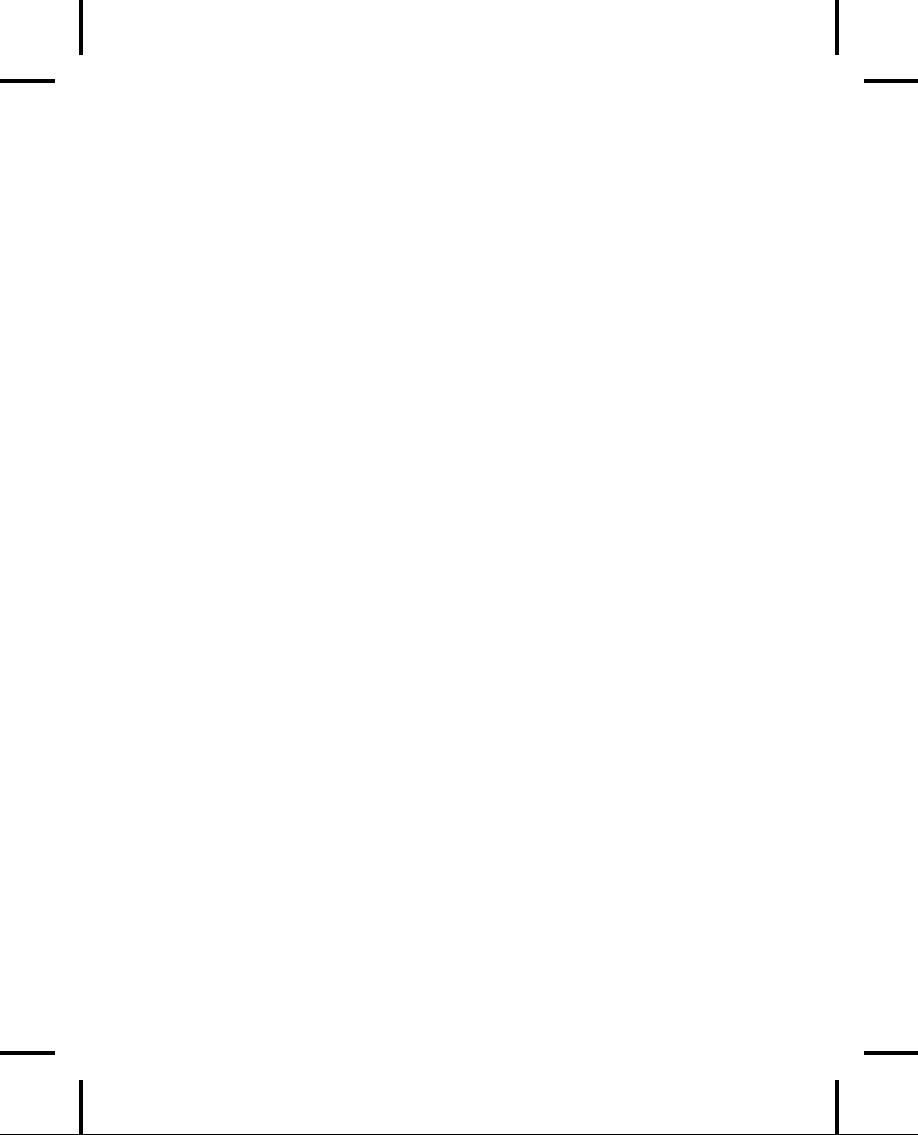
When
I first started learning
C++, your book "Thinking in
C++" was my shining
guide
light in a dark tunnel. It
has been my endeavor to
improve my C++ skills
whenever
possible, and to that effect,
"Thinking in C++" has given
me the strong
foundation
for my continuous improvement. Peter
Tran, Senior Systems
Analyst
(IM), Compaq Computer
Corporation
This
book is the best general
reference in my on-going quest to
master C++. Most
books
explain some topics
thoroughly but are deficient
in others. "Thinking in
C++"
2/E does not pass the
buck to another book. When I
have questions it has
answers.
Thomas
Michel
I
have a whole mountain of
books and none of them make
sense nor do they
explain
things properly. I have been
dying for a good template and
STL book.
Then
I decided to read your material and I
was amazed. What you did was
show
how
to write C++ with templates and
STL without bogging down with
details.
What
you did was what I expected of the
C++ community, the next
generation of
C++
authors. As an author I AM IMPRESSED at
your writing and
explanation
skills.
You covered topics that
nobody has properly covered
before. Your
approach
is one from a person who has
actually sat down and went
through the
material
in detail. And then you questioned
the sanity of the situation
and what
would
be the problem areas. On my
bookshelf, it will definitely be one of
the
necessary
books, right beside Petzold.
Christian
Gross, consultant/mentor
cgross@eusoft.com
I
think your book is very,
very, VERY good. I have
compared it to others in
the
bookstore,
and have found that your book
actually teaches me basic
C++
fundamentals
while I learn the STL... a
very nice experience to learn
about both
at
once, hand-in-hand. I think
your book is laid out very
well, and explains
things
in an easy-to-understand fashion. Jeff
Meininger, Software
Developer,
boxybutgood.com
Your
book is the best by far of
any I've seen. Please get it
right so that we can
all
have
an excellent and "reliable" reference
work! And please hurry! We
are
desperate
for a work of this quality! Steve
Strickland, Live Minds (a
Puzzle
business)
(On
Usenet) Unlike most other
C++ authors, Eckel has
made a career of
teaching
C++
and Java classes ONLY. He's had the
benefit of a GREAT deal of
novice
feedback,
and the books reflect that.
His books are not
just about writing in
C++/Java,
but understanding the intent
of the languages and the
mindset that
goes
with thinking in them. Eckel's
also the best technical
writer I've read
since
Jeff
Duntemann. Very clear and
easy to read. Don't be put off by the
apparent
large
size of his books. Either
can be read in *less* than
21 days. :-} Randy
Crawford,
MRJ Technology Solutions, Fairfax
VA
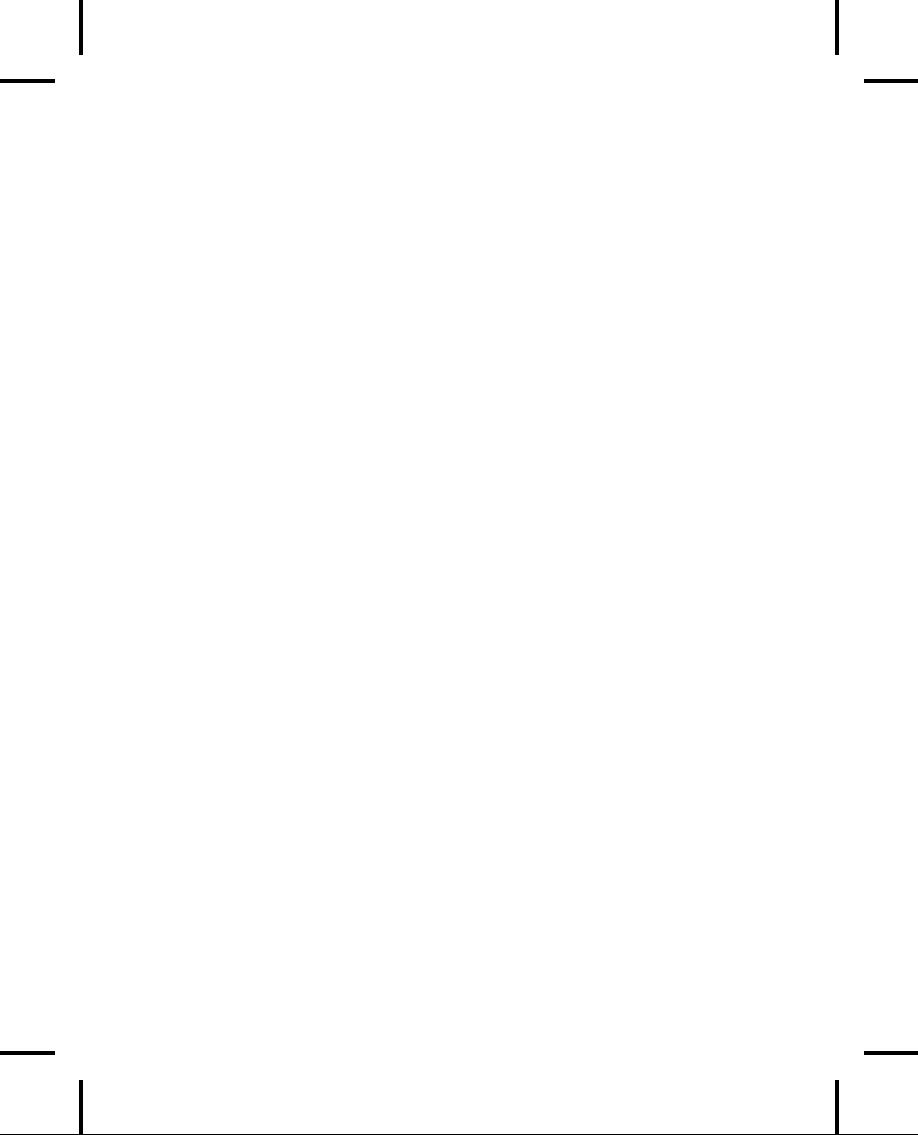
Your
work is greatly appreciated and I thank
you for helping me understand
both
C++ and Java better. Barry
Wallin, Math/Computer Science
Teacher,
Rosemount
High School, Rosemount,
MN
I
would like to thank you for your book
"Thinking in C++" which is,
with no
doubt,
the best book I ever
read about this subject.
Riccardo
Tarli - SW
Engineer
- R&D TXT Ingegneria Informatica -
Italy
I
have been reading both of
your books, Thinking In Java and
Thinking In C++.
Each
of these books is easily the
best in its category. Ratnakarprasad
H.
Tiwari,
Mumbai, India
...
the "Debugging Hints"
section is so valuable, I'm tempted to
print it and keep
it
with me at all times. I think
this section should be a
mandatory part of any
introductory
class after the first one or
two programming problems. Fred
Ballard,
Synectics Inc.
Your
book is really a treasure
trove of C++ knowledge. I
feel like you give a
good
overview
and then explain the nuts
and bolts. Raymond
Pickles, Antenna
Section,
Radar Division, U.S. Naval
Research Laboratory,
Washington
DC
As
an Internal Medicine Specialist and
Computer Scientist I spend a
great deal of
time
trying to extract information from
books and journals. My experience is
that
a
good author is one who makes
difficult concepts accessible, a
great one makes
it
look almost easy. On this
score you are certainly one
of my top three
technical
writers.
Keep up the good work.
Dr.
Declan O'Kane, Leicester,
England
For
my second-level C++ course,
"Thinking in C++" is my constant
reference
and
companion, and I urge my students to
consult it regularly. I refer to
the
chapter
on Operator Overloading constantly.
The examples/code alone
are
worth
the cost of the book
many times over. So many
books and development
environments
are predicated on the
assumption that the only
application for a
programming
language is for a Windows environment;
it's great to find and
use
a
book which concentrates on
C++ so we can prepare our
students for careers in
fields
like embedded systems,
networking, etc., which require
real depth of
understanding.
Robert
Chase, Professor, Sweet
Briar College
I
think it's a fantastic intro
to C++, especially for longtime
dabblers like me I
often
know "how," but rarely "why," and TIC2 is
a godsend. Tony
Likhite,
System
Administrator/DBA, Together
Networks
After
reading the first 80 pages
of this book, I have a
better understanding of oop
then
I've gotten out of the ton
of books I've accumulated on the
subject. Thanks...
Rick
Schneewind
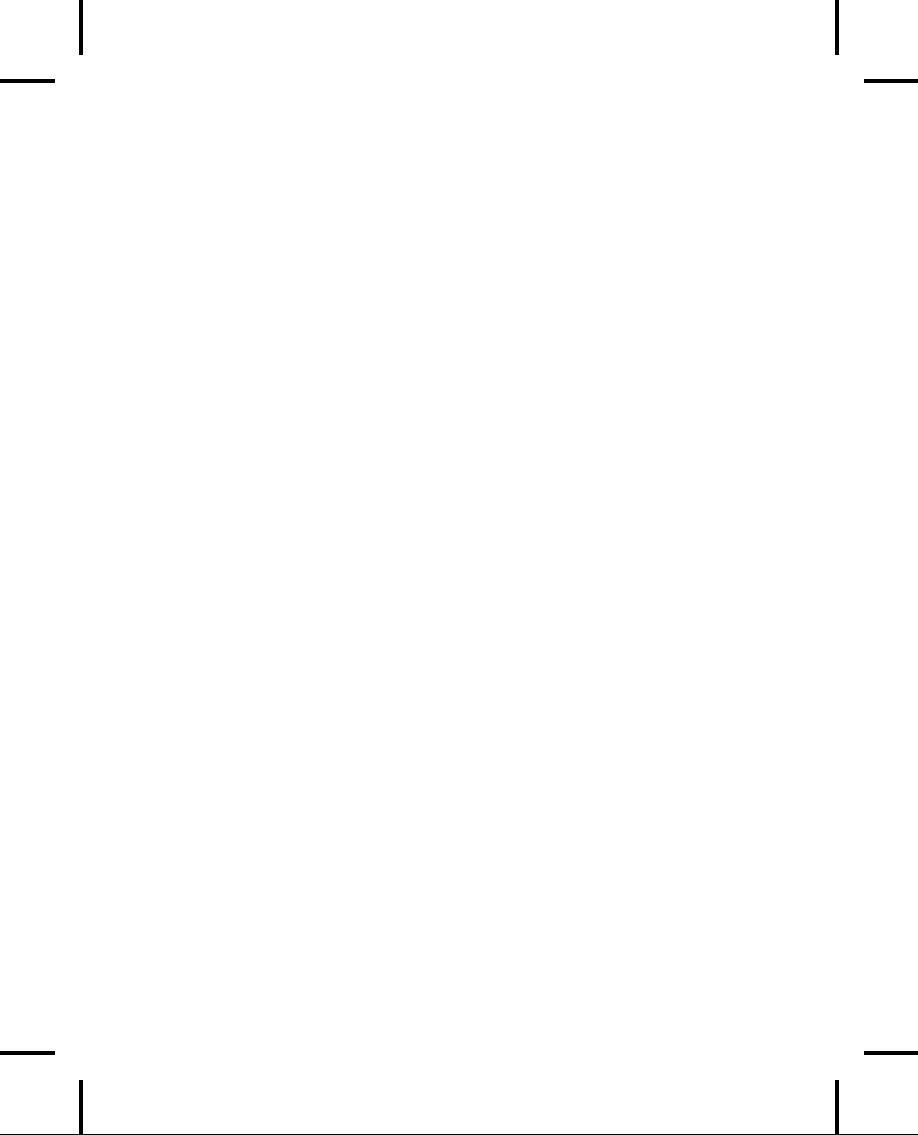
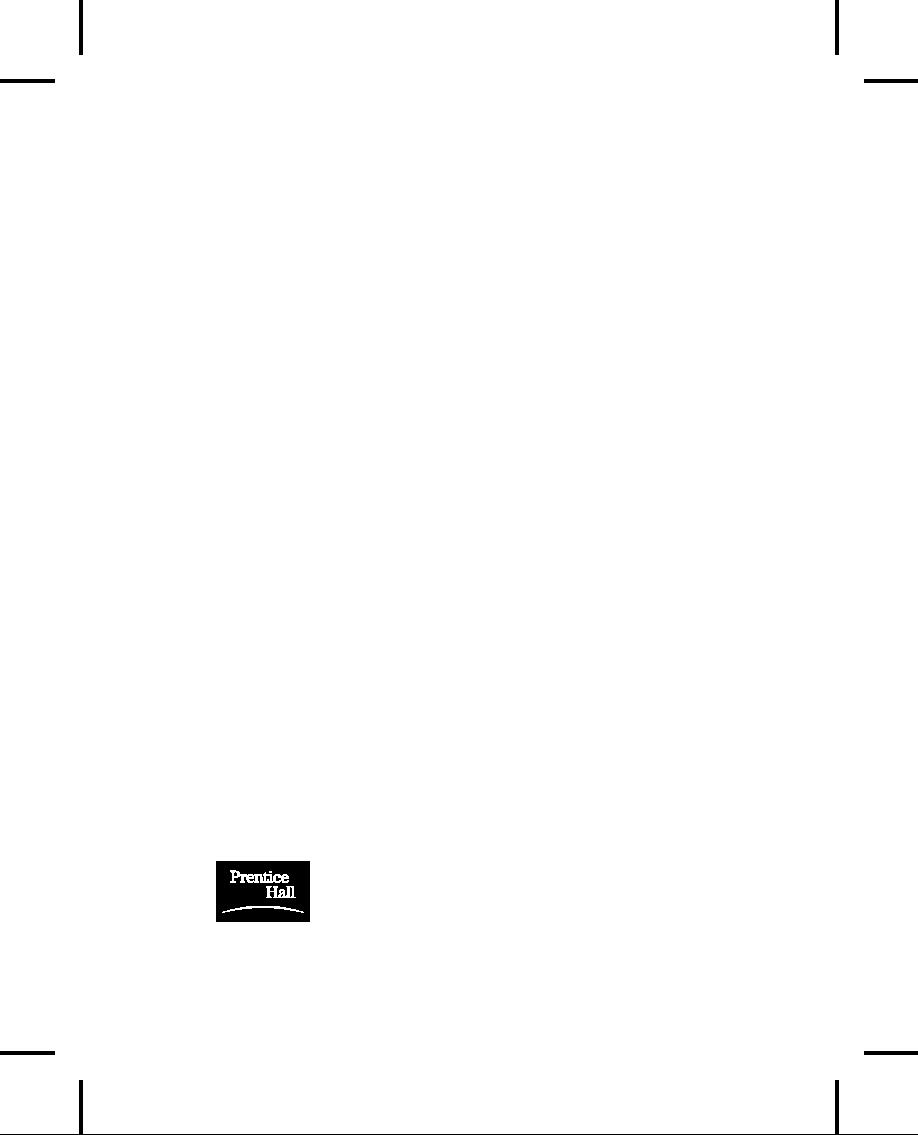
Thinking
In
C++
Second
Edition
Bruce
Eckel
President,
MindView Inc.
Prentice
Hall
Upper
Saddle River, New Jersey
07458
http://www.prenhall.com
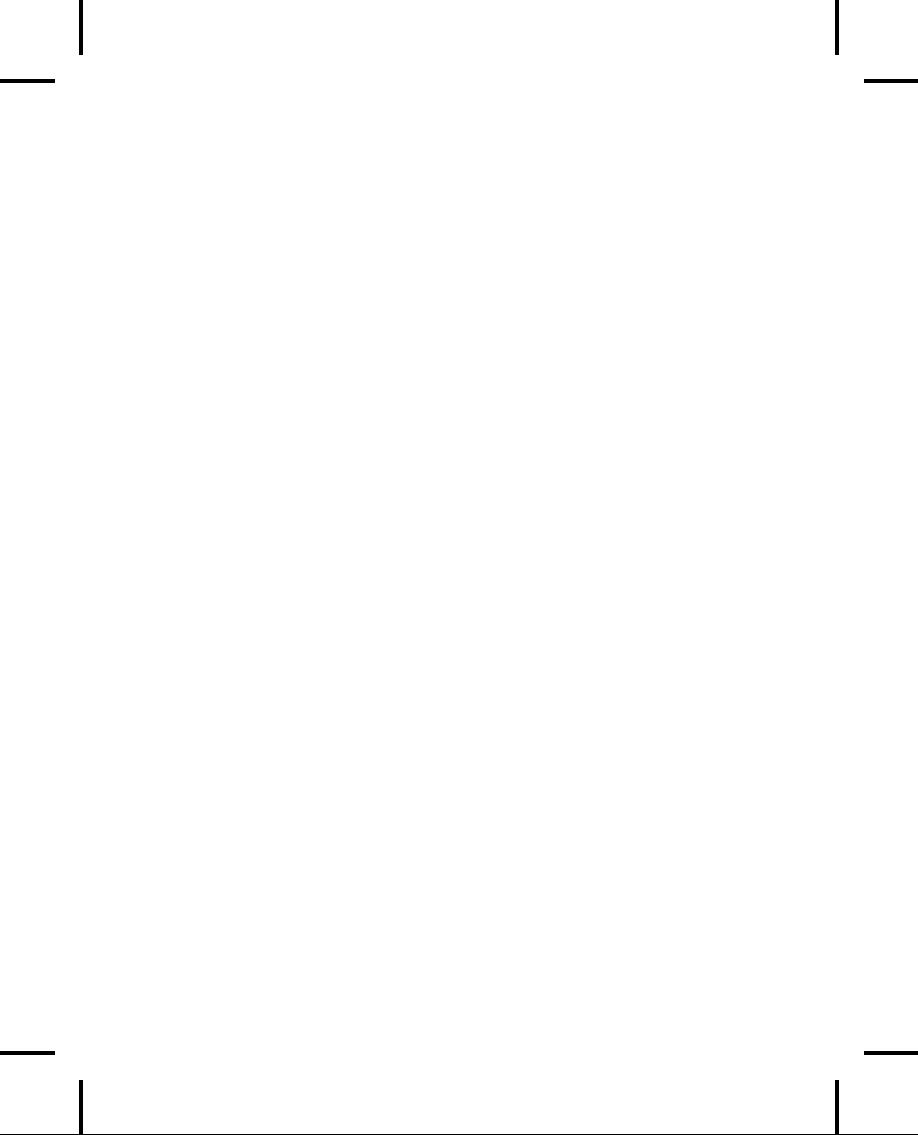
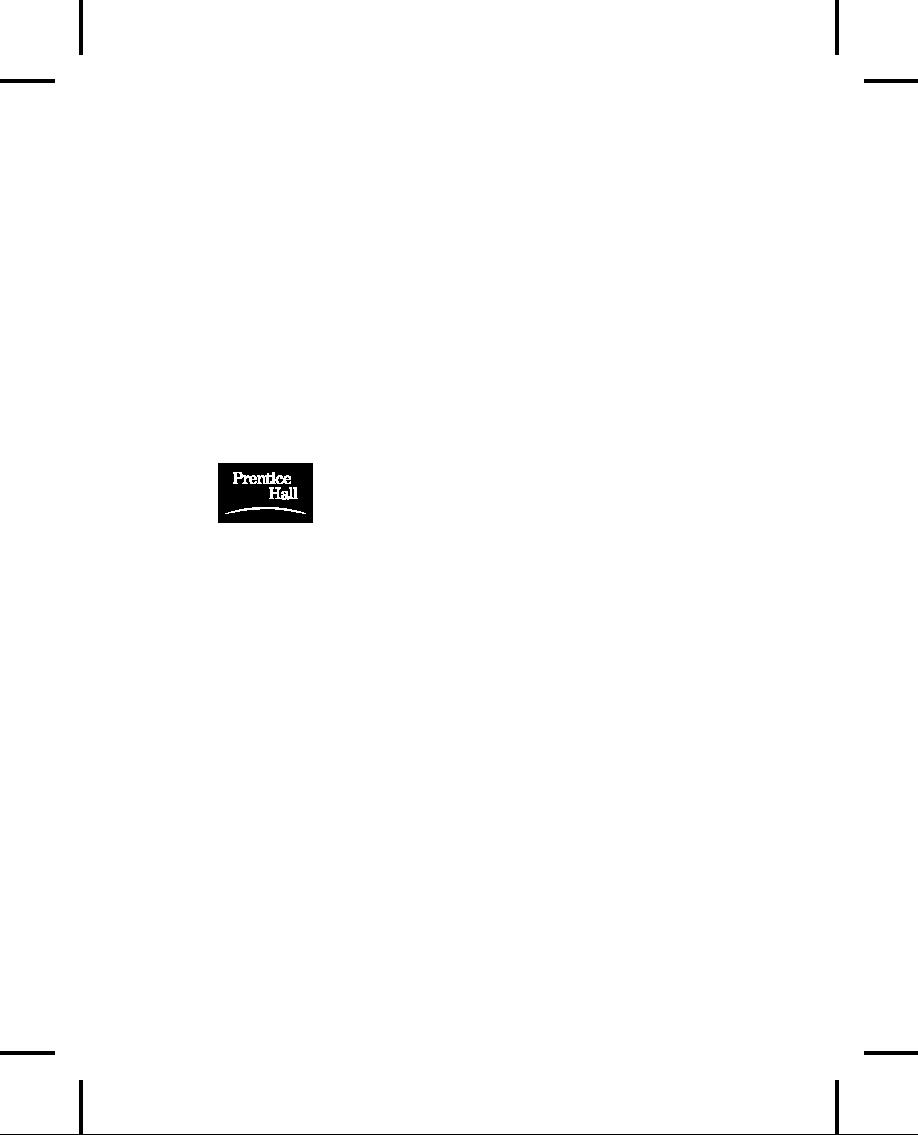
Publisher:
Alan
Apt
Production
Editor: Scott
Disanno
Executive
Managing Editor: Vince
O'Brien
Vice
President and Editorial
Director: Marcia
Horton
Vice
President of Production and
Manufacturing: David W.
Riccardi
Project
Manager: Ana
Terry
Book
Design, Cover Design and
Cover Line Art:
Daniel
Will-Harris,
daniel@will-harris.com
Cover
Watercolor: Bruce
Eckel
Copy
Editor: Stephanie
English
Production
Coordinator: Lori
Bulwin
Editorial
Assistant: Toni
Holm
Marketing
Managers: Jennie
Burger, Bryan Gambrel
�2000
by Bruce Eckel, MindView,
Inc.
Published
by Prentice Hall Inc.
Pearson
Higher Education
Upper
Saddle River, New Jersey
07632
The
information in this book is
distributed on an "as is"
basis, without warranty.
While
every
precaution has been taken in
the preparation of this
book, neither the author
nor the
publisher
shall have any liability to
any person or entitle with
respect to any liability,
loss
or
damage caused or alleged to be caused
directly or indirectly by instructions
contained
in
this book or by the computer
software or hardware products
described herein.
All
rights reserved. No part of
this book may be reproduced
in any form or by any
electronic
or mechanical means including information
storage and retrieval
systems
without
permission in writing from
the publisher or author,
except by a reviewer
who
may
quote brief passages in a
review. Any of the names used in
the examples and text
of
this
book are fictional; any
relationship to persons living or
dead or to fictional
characters
in
other works is purely
coincidental.
Printed
in the United States of
America
10
9 8 7 6 5 4 3 2 1
ISBN
0-13-979809-9
Prentice-Hall
International (UK) Limited,
London
Prentice-Hall
of Australia Pty. Limited,
Sydney
Prentice-Hall
Canada, Inc., Toronto
Prentice-Hall
Hispanoamericana, S.A., Mexico
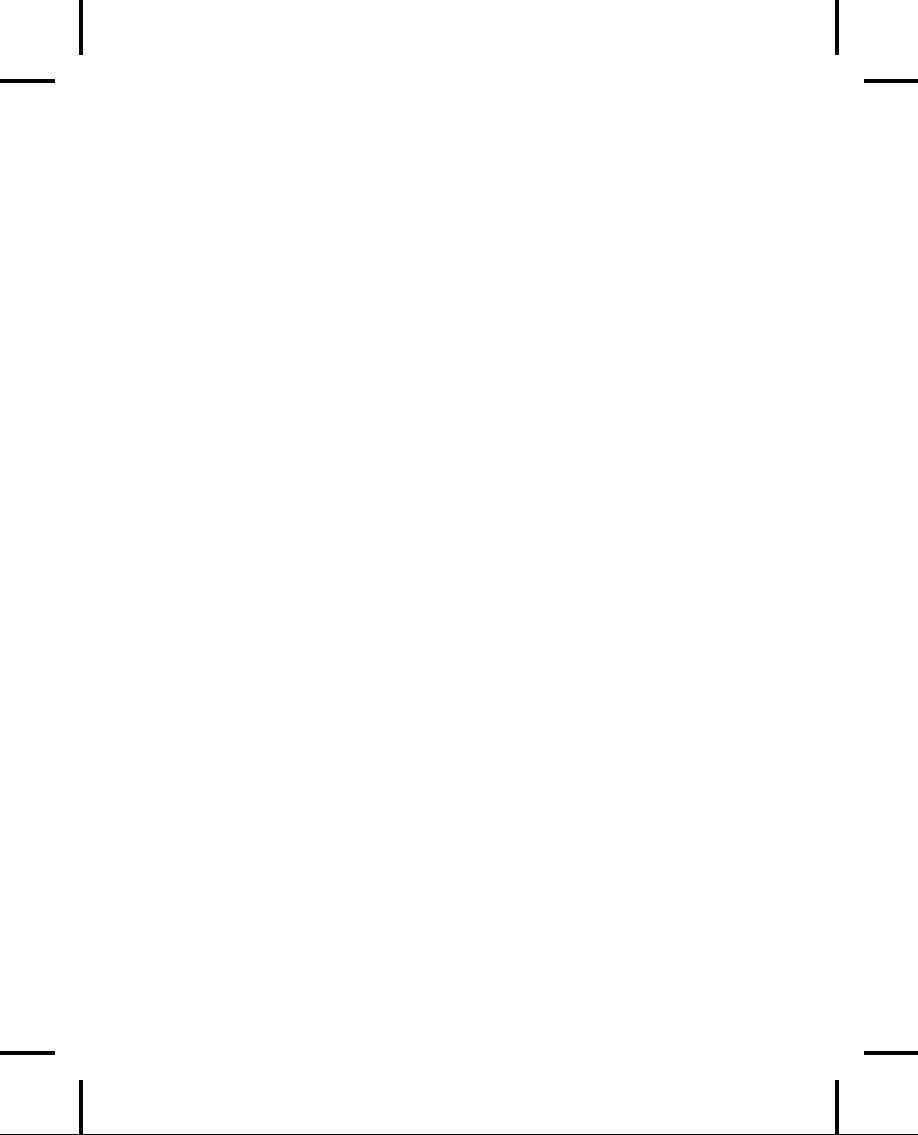
Prentice-Hall
of India Private Limited,
New
Delhi
Prentice-Hall
of Japan, Inc., Tokyo
Pearson
Education Asia Ltd., Singapore
Editora
Prentice-Hall do Brasil, Ltda.,
Rio
de Janeiro
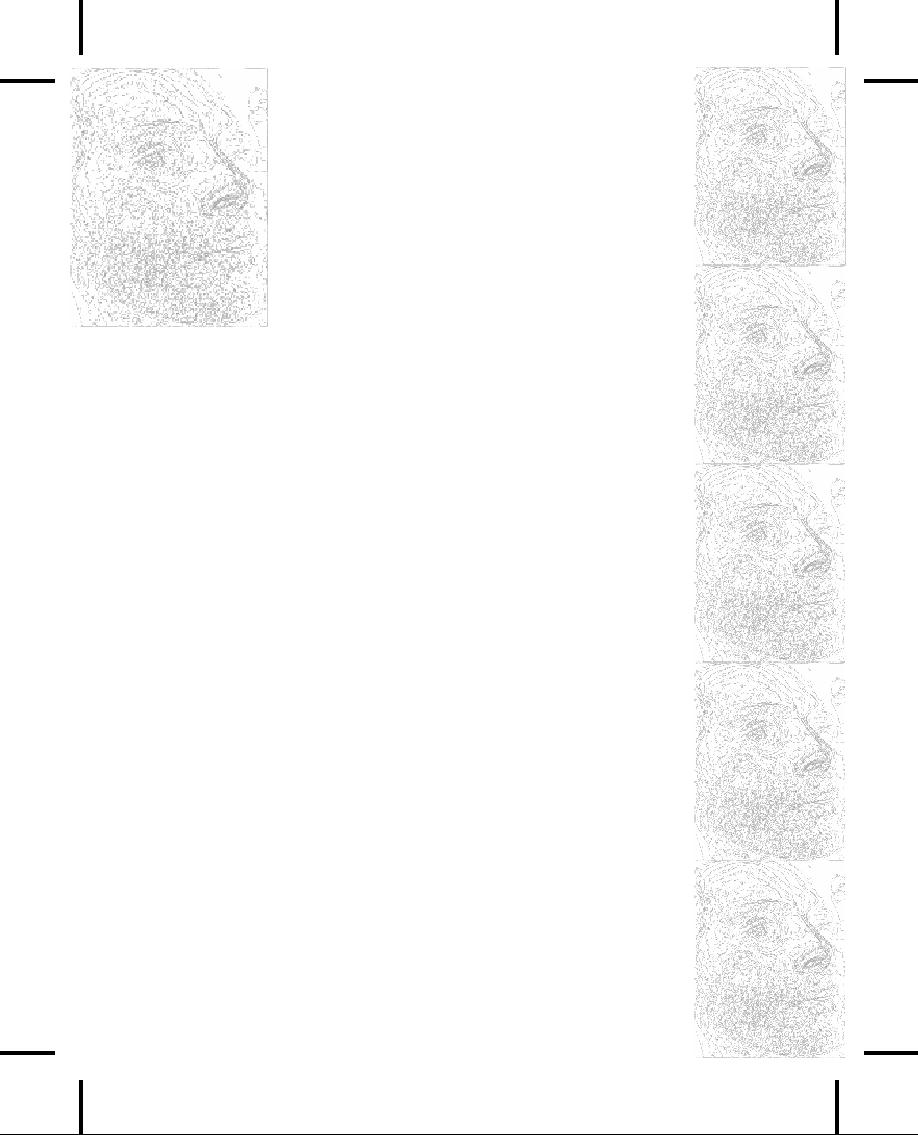
Public
C++
Seminars
Check
for
in-depth details and the
date
and
location of the next:
Hands-On
C++ Seminar
�
Based
on this book
�
Get
a solid grounding in Standard C++
fundamentals
�
Includes
in-class programming
exercises
�
Personal
attention during exercises
Intermediate
C++ Seminar
�
Based
on Volume 2 of this book (downloadable
at
)
�
In-depth
coverage of the Standard C++
Library
�
Strings,
containers, iterators,
algorithms
�
In-depth
templates & exception
handling
Advanced
C++ Topics
�
Based
on advanced topics in Volume 2 of this
book
�
Design
patterns
�
Building
robust systems
�
Creating
testing & debugging
frameworks
Subscribe
to the free newsletter
to
be automatically informed
of
upcoming seminars
Also
visit www.BrucEckel.com for:
Consulting
Services
!"
!"
Exercise
solutions for this book
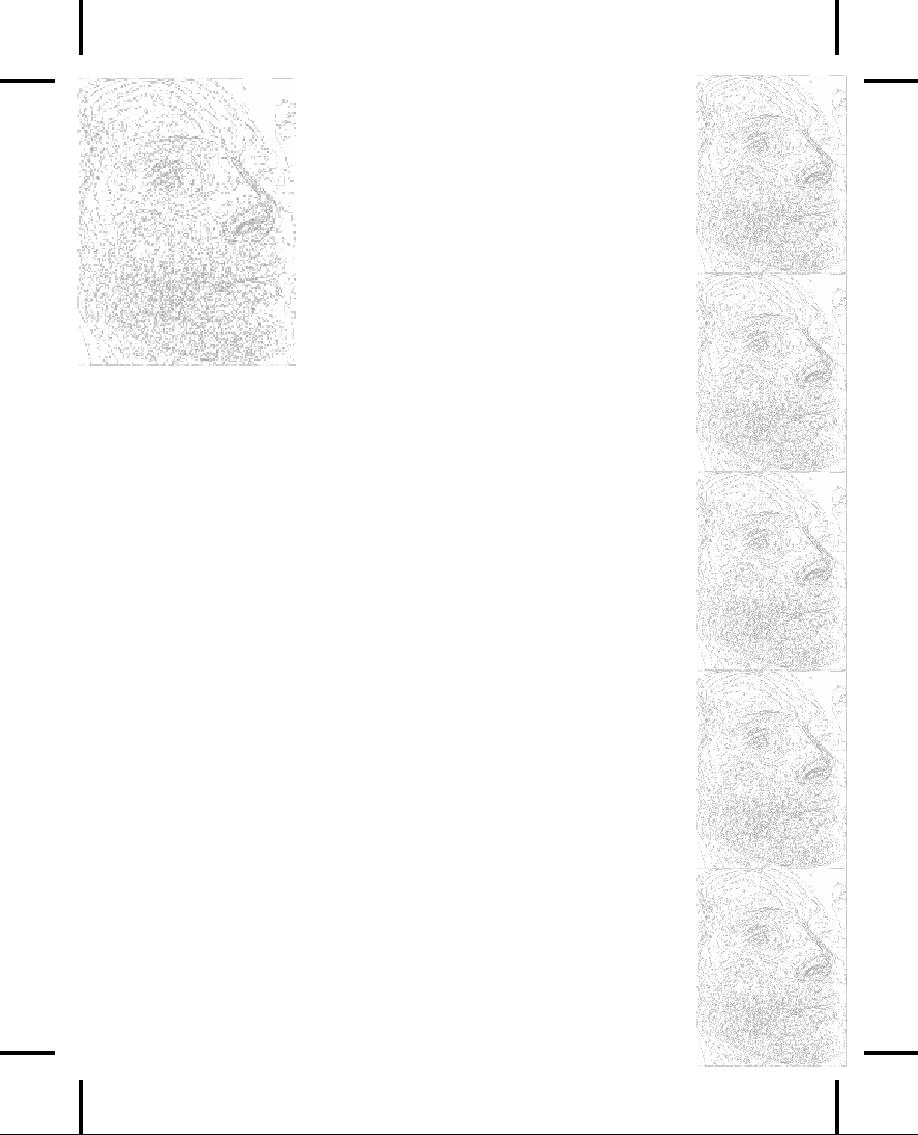
Seminars-on-CD-ROM
If
you like theThinking
in C
Seminar-on-CD
packaged with
this
book, then you'll also like:
Bruce
Eckel's
Hands-On
C++ Seminar
Multimedia
CD ROM
It's
like coming to the seminar!
Available
at
�
Overhead
slides and synchronized audio
recorded by Bruce
Eckel
�
All
the lectures from the
Hands-On C++ Seminar
�
Based
on this book
�
Get
a solid grounding in Standard C++
Fundamentals
�
Just
play it to see and hear the
lectures!
�
Lectures
are indexed so you can
rapidly locate the
discussion
of
any subject
�
Details
and sample lecture can be found on
the Web site
See
for
other Seminars-on-CD ROM
�
The
Intermediate C++ Seminar
�
Advanced
C++ Topics
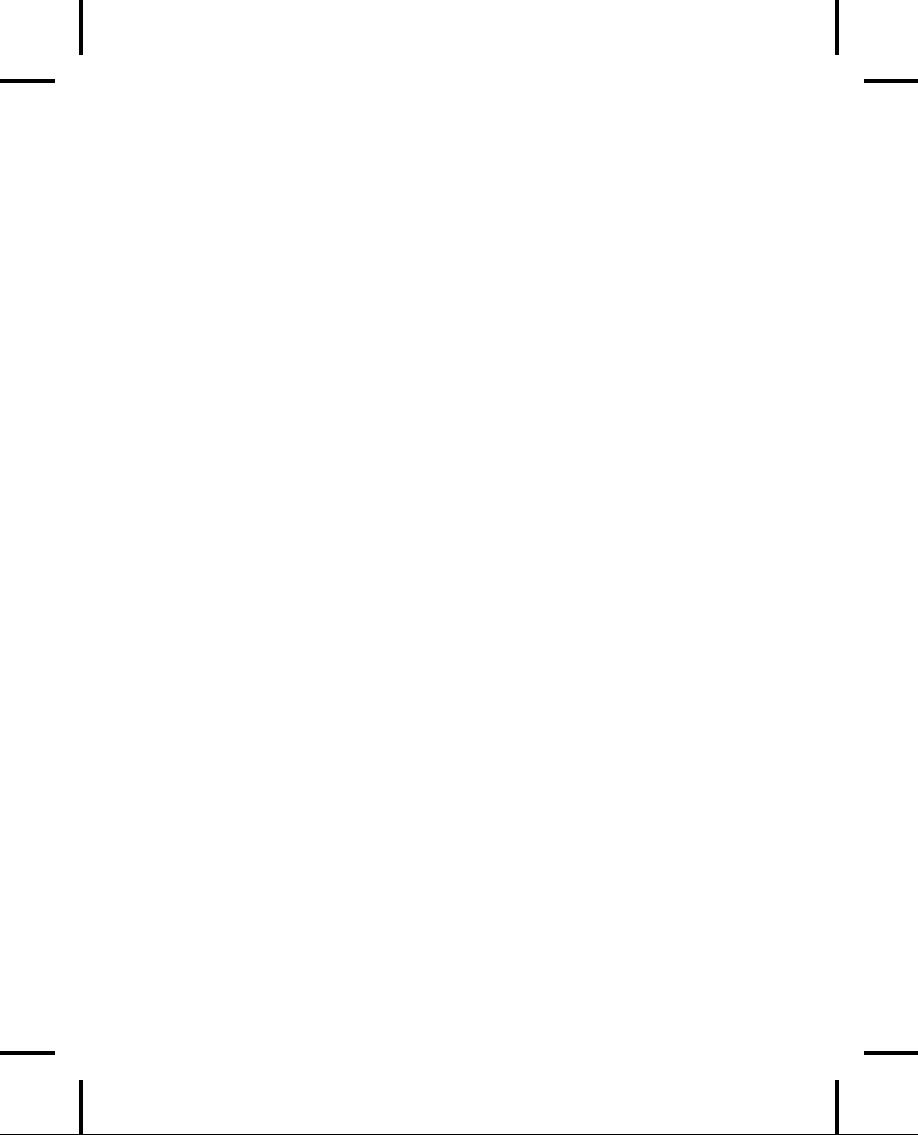
Dedication
To
my parents, my sister, and my
brother
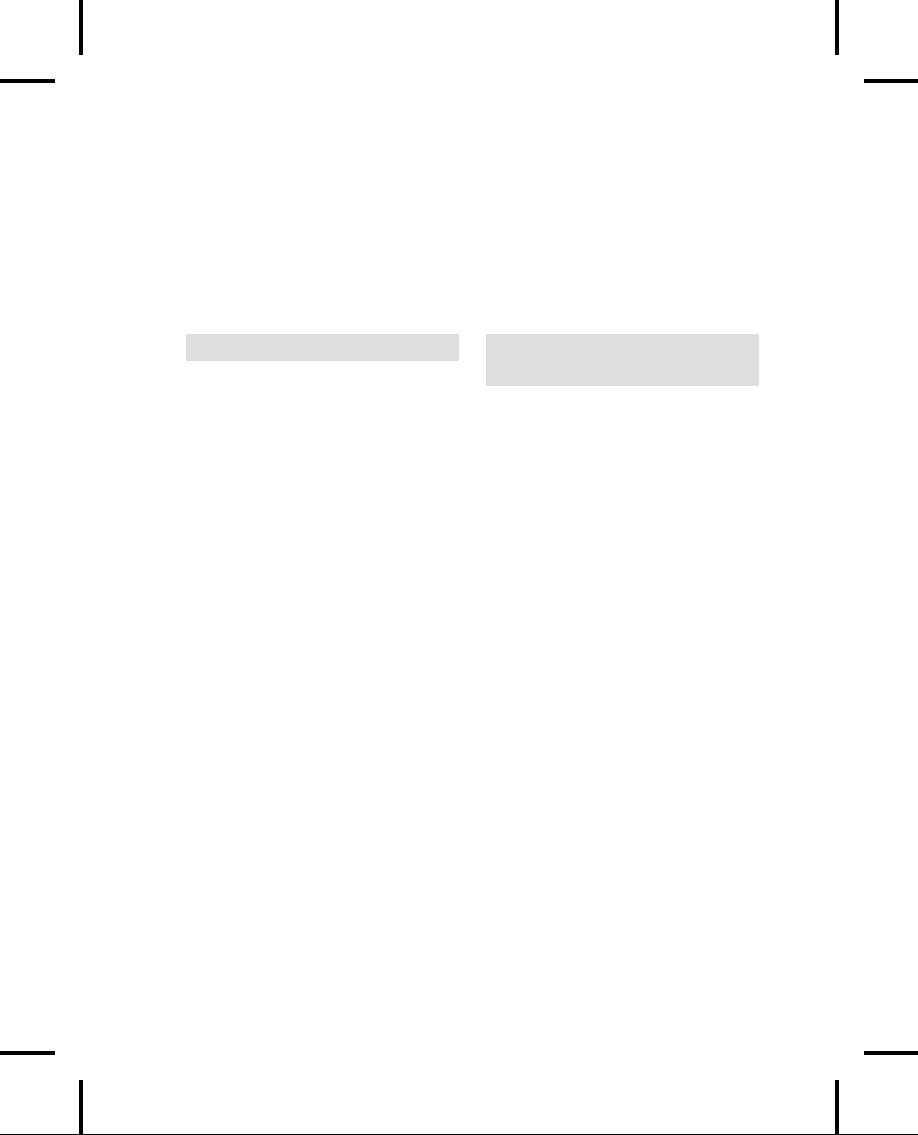
What's
inside...
1:
Introduction to
What's
new in
The
progress of
What's
in Volume 2
An
object has an
The
hidden
Reusing
the
Inheritance:
reusing
Language
Is-a
vs. is-like-a
Interchangeable
The
book's
objects
with
CD
ROMs, seminars,
Creating
and
Exception
handling:
Book
design and
Analysis
Phase
1: What are
Phase
2: How will
Phase
4: Iterate
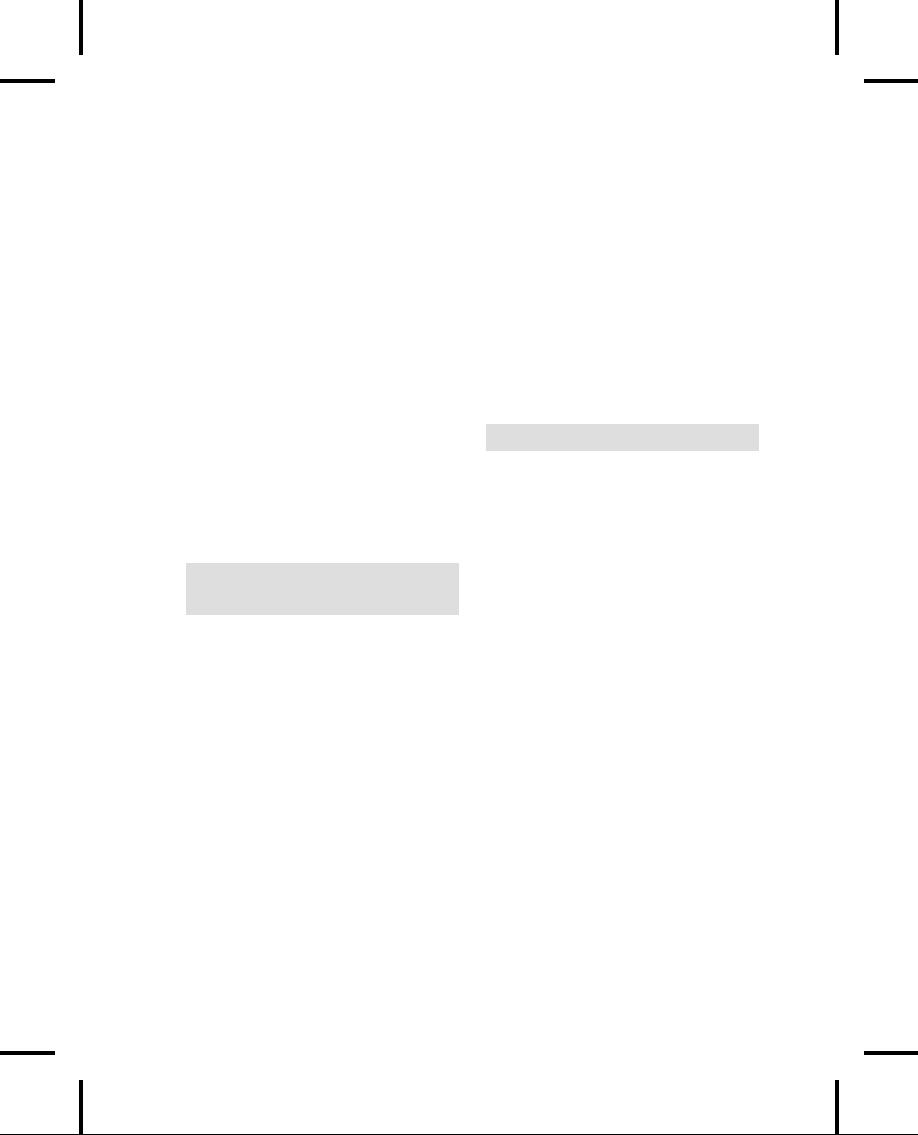
More
about
Extreme
Character
array
Why
C++
Introducing
Reading
and
You're
already on
Introducing
Systems
are easier to
Maximal
leverage
Source-code
reuse
Strategies
for
Creating
Using
the C
Creating
your own
2:
Making & Using
Controlling
The
process of
language
The
break and
Tools
for separate
Introduction
to
Your
first
Auto
increment
Introduction
to
Fundamentals
of
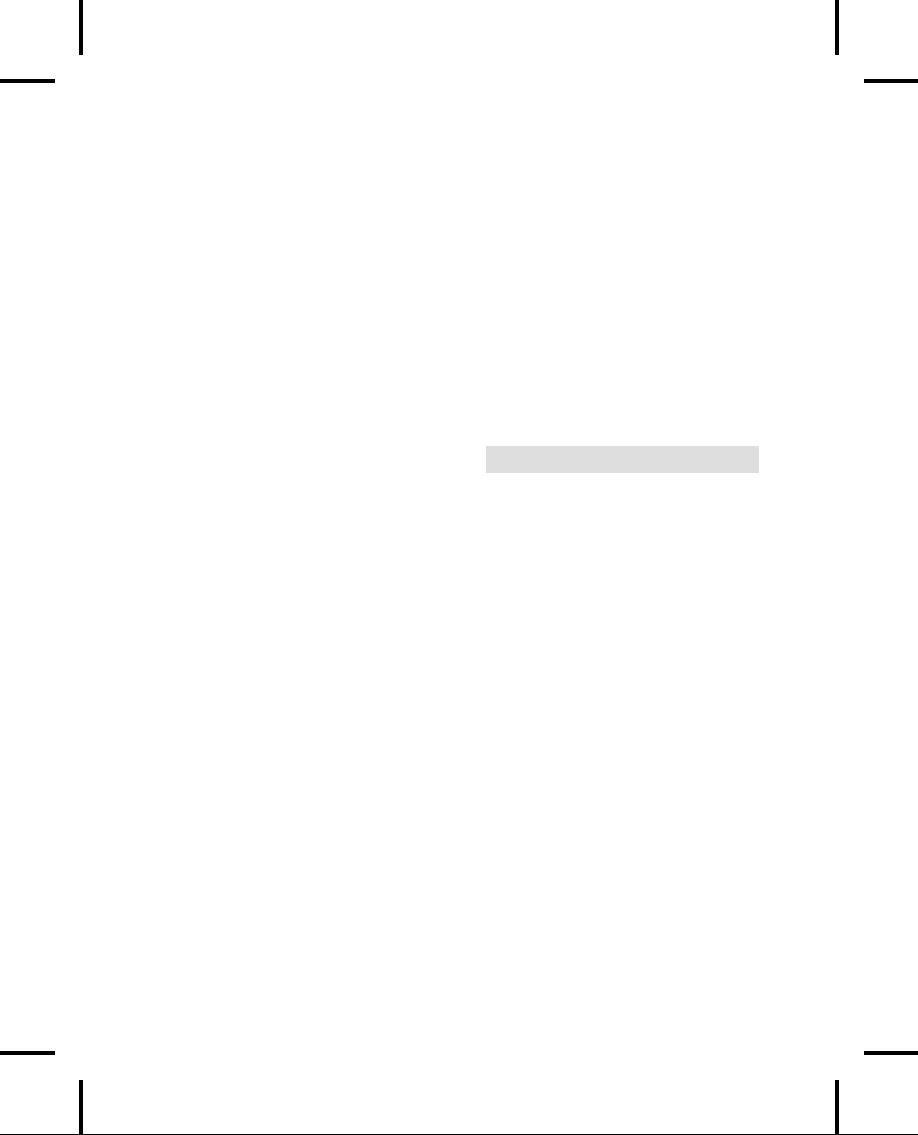
Function
Modifying
the
Introduction
to
Defining
a
Pointers
and references
Complicated
declarations
Defining
variables
Arrays
of pointers
Specifying
storage
Make:
managing
separate
Operators
and
A
tiny C-like
Dynamic
Common
pitfalls
Abstract
sizeof
an operator
Composite
type
Header
file
Aliasing
names
Importance
of
Combining
variables
The
multiple-declaration
Clarifying
programs
The
preprocessor directives
#define,
#ifdef,
Saving
memory
Turning
variables and
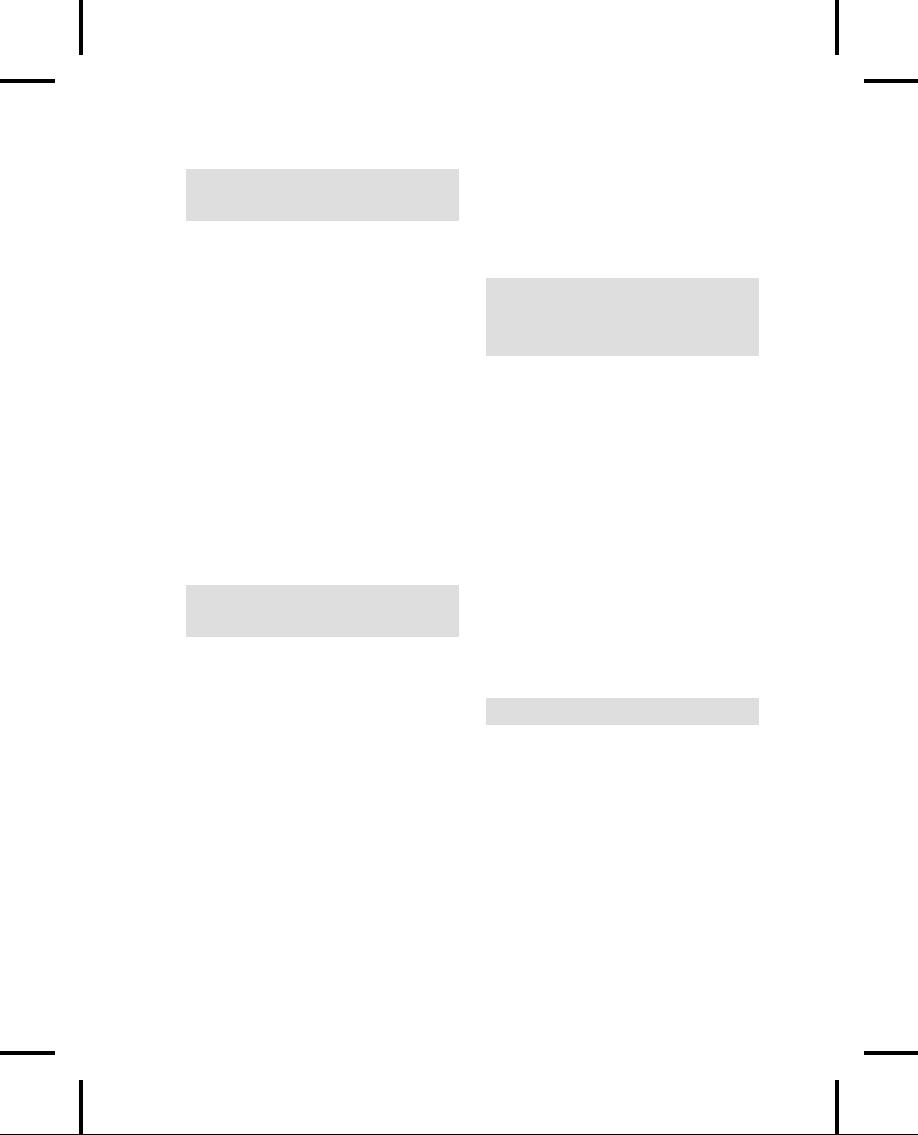
Aggregate
5:
Hiding the
Default
C++
access
7:
Function Overloading
&
Default
More
name
Modifying
Stash to use
Overloading
on
Modifying
Stack to use
Overloading
Hiding
the
Default
Choosing
overloading
6:
Initialization &
vs.
default
Guaranteed
initialization
with the
Guaranteed
cleanup
with
the
Elimination
of the
Stash
with
Assignment
and
constructors
and
Function
arguments &
Stack
with constructors
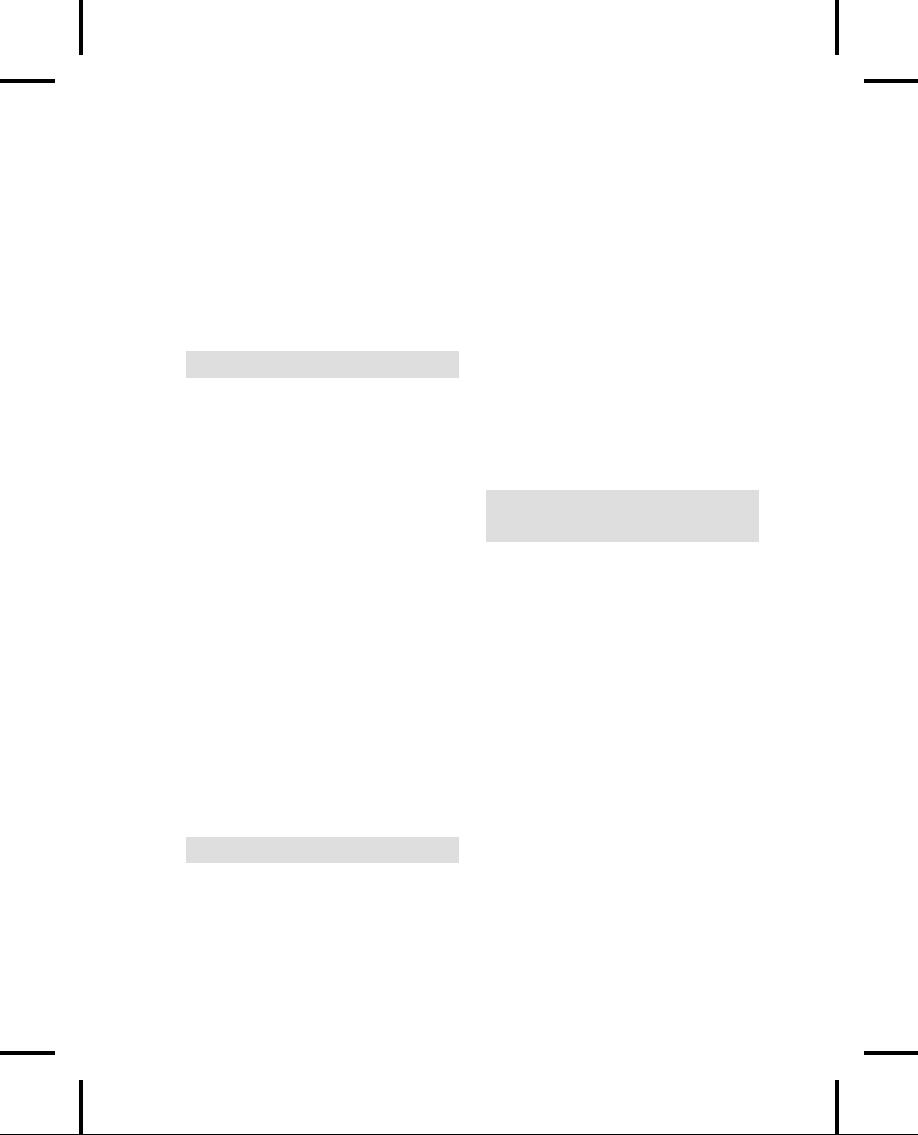
Other
storage
Passing
and returning
Compile-time
constants
Static
members
const
objects &
Defining
storage for
Static
initialization
Preprocessor
Alternate
linkage
11:
References & the
Stash
& Stack
Inlines
&
References
Hidden
activities in
constructors
&
Argument-passing
The
copy-
More
preprocessor
Passing
& returning
Improved
error
Alternatives
to copy-
Pointers
Static
elements
static
variables
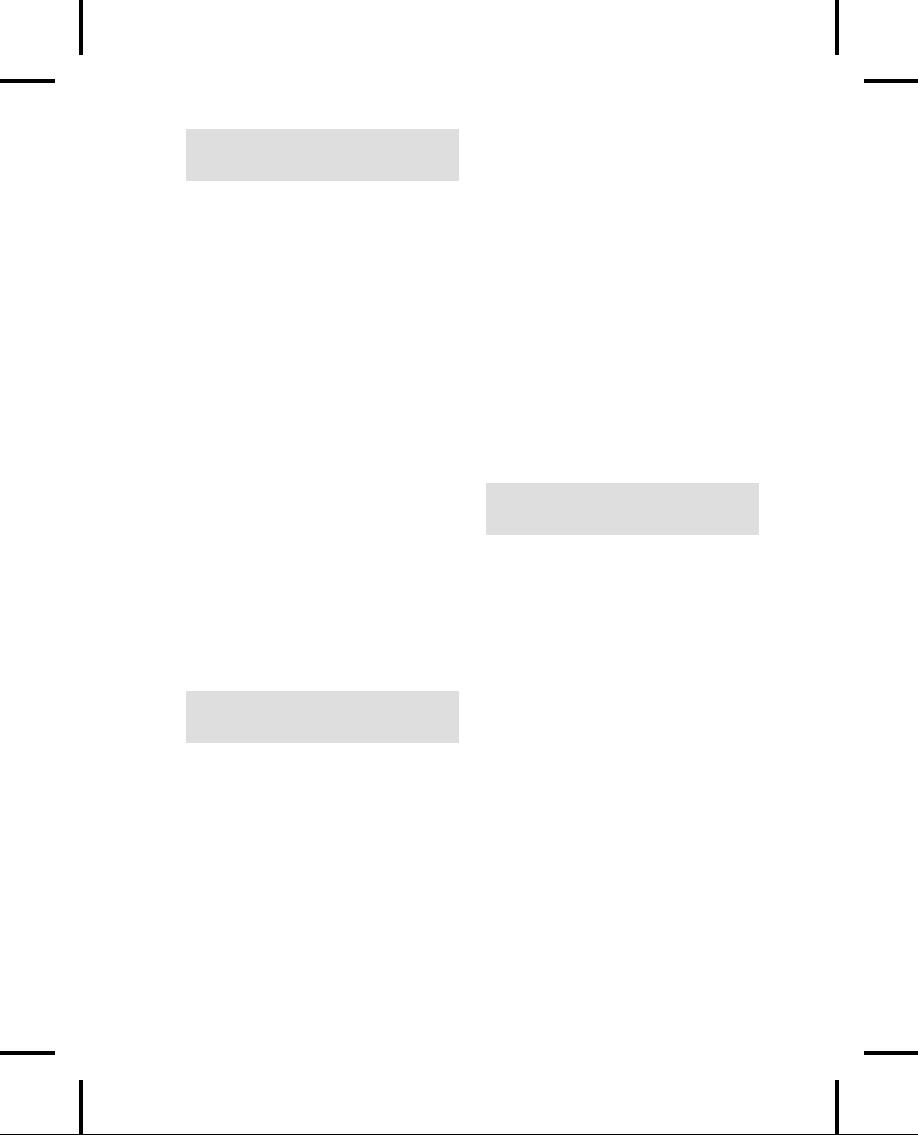
12:
Operator
new
& delete
Warning
&
Making
a pointer
Running
out
Overloadable
Overloading
Overloading
global
Arguments
&
Overloading
Overloading
Operators
you
Non-member
Overloading
14:
Inheritance &
Automatic
type
Composition
Inheritance
Pitfalls
in automatic
The
constructor
Member
object
13:
Dynamic
Built-in
types in the
Combining
composition
Order
of constructor &
Functions
that
Memory
manager
don't
automatically
Early
examples
Inheritance
and static
delete
void* is
Cleanup
responsibility
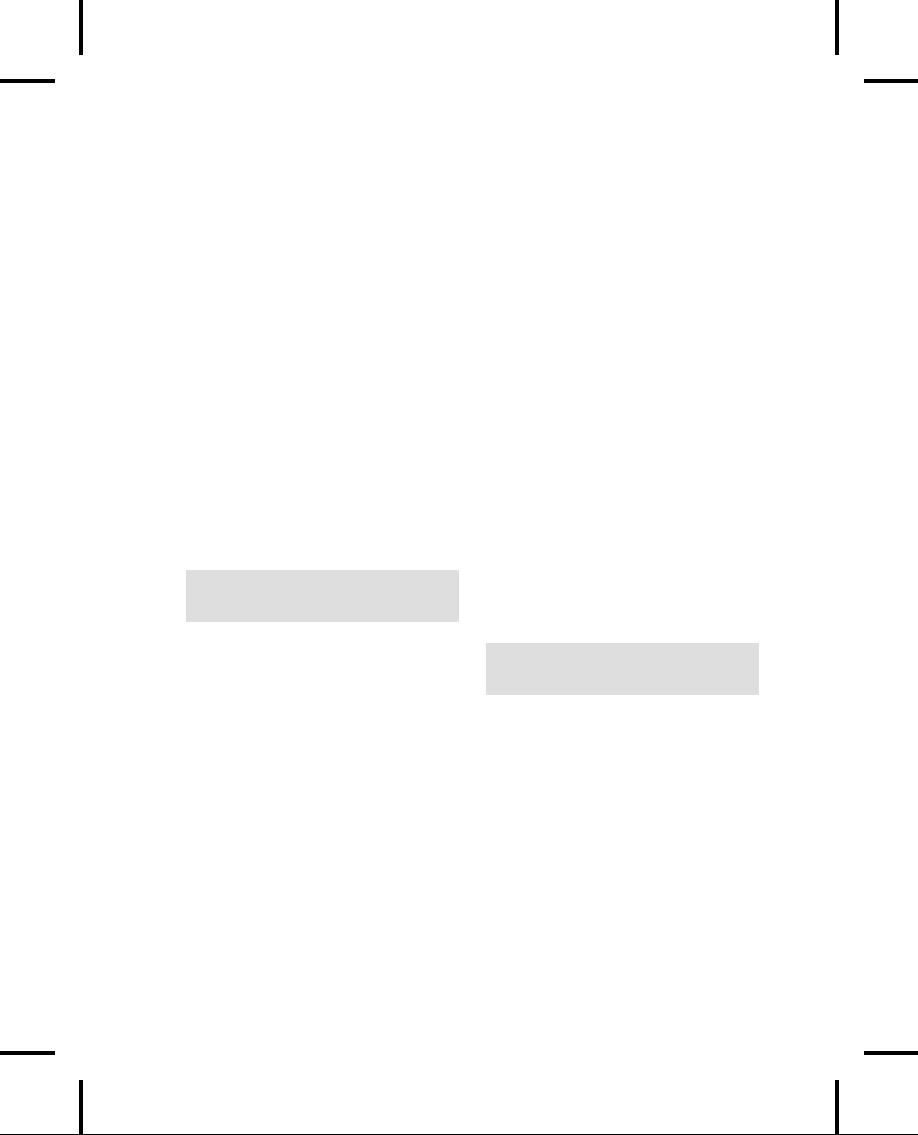
Abstract
base classes
Choosing
composition
and
pure virtual
Inheritance
and
Operator
overloading
Overloading
&
Multiple
Incremental
virtual
functions &
Behavior
of virtual functions
Upcasting
and the
Destructors
and
Composition
vs.
Pointer
& reference
Creating
an
Operator
15:
Polymorphism &
Evolution
of C++
16:
Introduction to
Overview
How
C++ implements
Non-inline
Stack
and Stash
Why
virtual
Turning
ownership
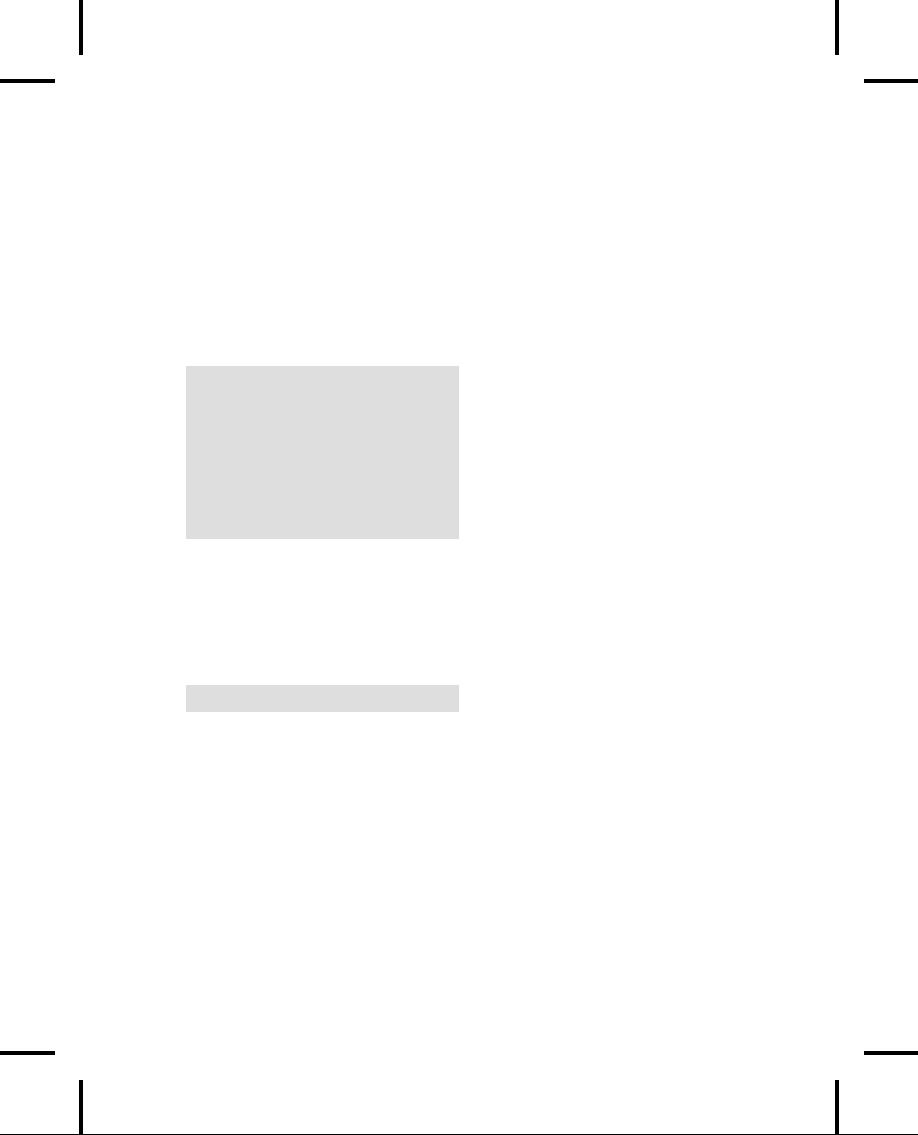
Holding
objects
Introducing
B:
Programming
C:
Recommended
Depth
&
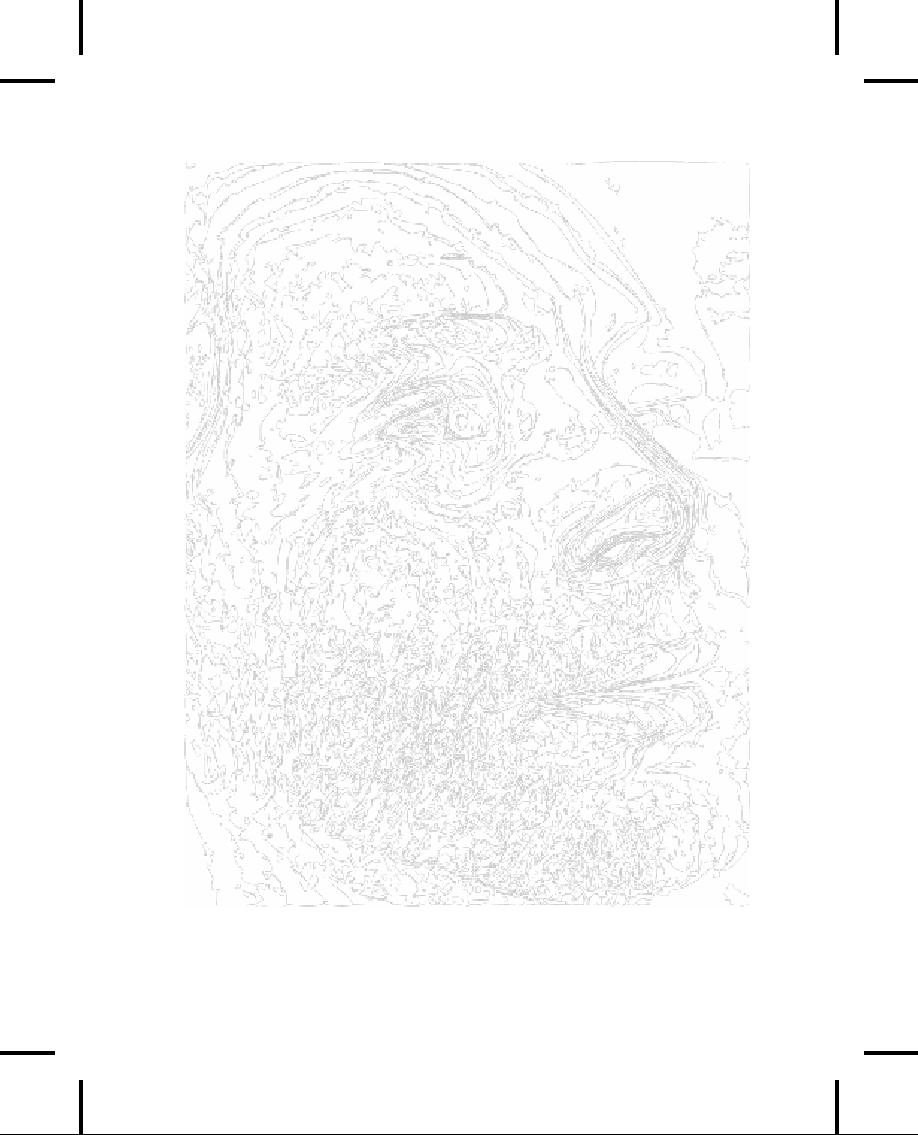
Preface
Like
any human language, C++ provides a way
to
express
concepts. If successful, this
medium of
expression
will be significantly easier
and more flexible
than
the alternatives as problems
grow larger and more
complex.
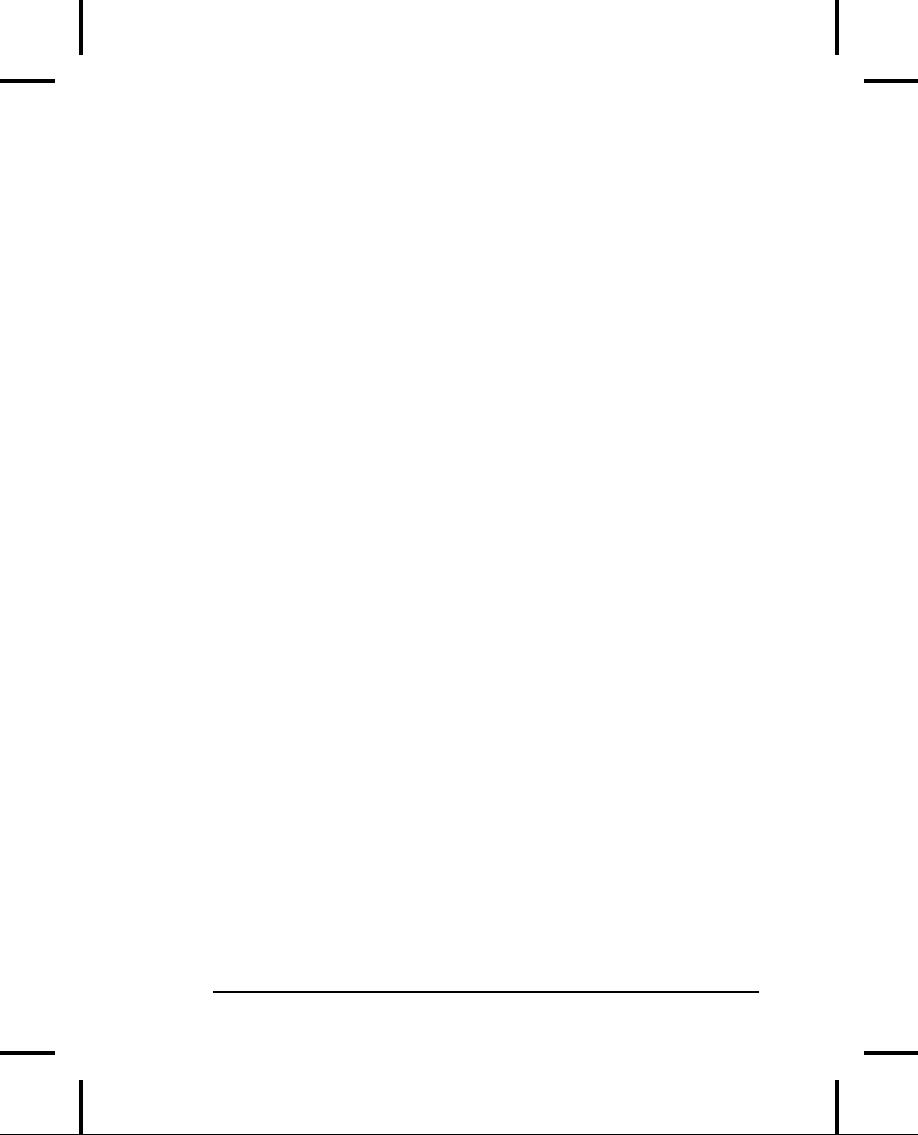
You
can't just look at C++ as a
collection of features; some of
the
features
make no sense in isolation. You
can only use the sum
of
the
parts if you are thinking about
design, not simply
coding. And
to
understand C++ this way, you must
understand the
problems
with
C and with programming in general. This
book discusses
programming
problems, why they are problems, and
the approach
C++
has taken to solve such
problems. Thus, the set of
features I
explain
in each chapter will be based on
the way that I see a
particular
type of problem being solved with
the language. In this
way
I hope to move you, a little at a time,
from understanding C to
the
point where the C++ mindset
becomes your native
tongue.
Throughout,
I'll be taking the attitude
that you want to build a
model
in your head that allows you to
understand the language
all
the
way down to the bare metal; if you
encounter a puzzle, you'll
be
able to feed it to your model and
deduce the answer. I will try
to
convey
to you the insights that
have rearranged my brain to
make
me
start "thinking in C++."
What's
new in the second edition
This
book is a thorough rewrite of
the first edition to reflect
all of
the
changes introduced in C++ by the
finalization of the C++
Standard,
and also to reflect what I've learned
since writing the
first
edition. The entire text
present in the first edition
has been
examined
and rewritten, sometimes removing old
examples, often
changing
existing examples and adding new
ones, and adding
many
new exercises. Significant rearrangement
and re-ordering of
the
material took place to
reflect the availability of
better tools and
my
improved understanding of how people
learn C++. A new
chapter
was added which is a rapid
introduction to the C
concepts
and
basic C++ features for those who don't
have the C background
to
tackle the rest of the
book. The CD ROM bound into the
back of
the
book contains a seminar that
is an even gentler introduction
to
the
C concepts necessary to understand C++
(or Java). It was
created
by Chuck Allison for my company
(MindView, Inc.), and
2
Thinking
in C++
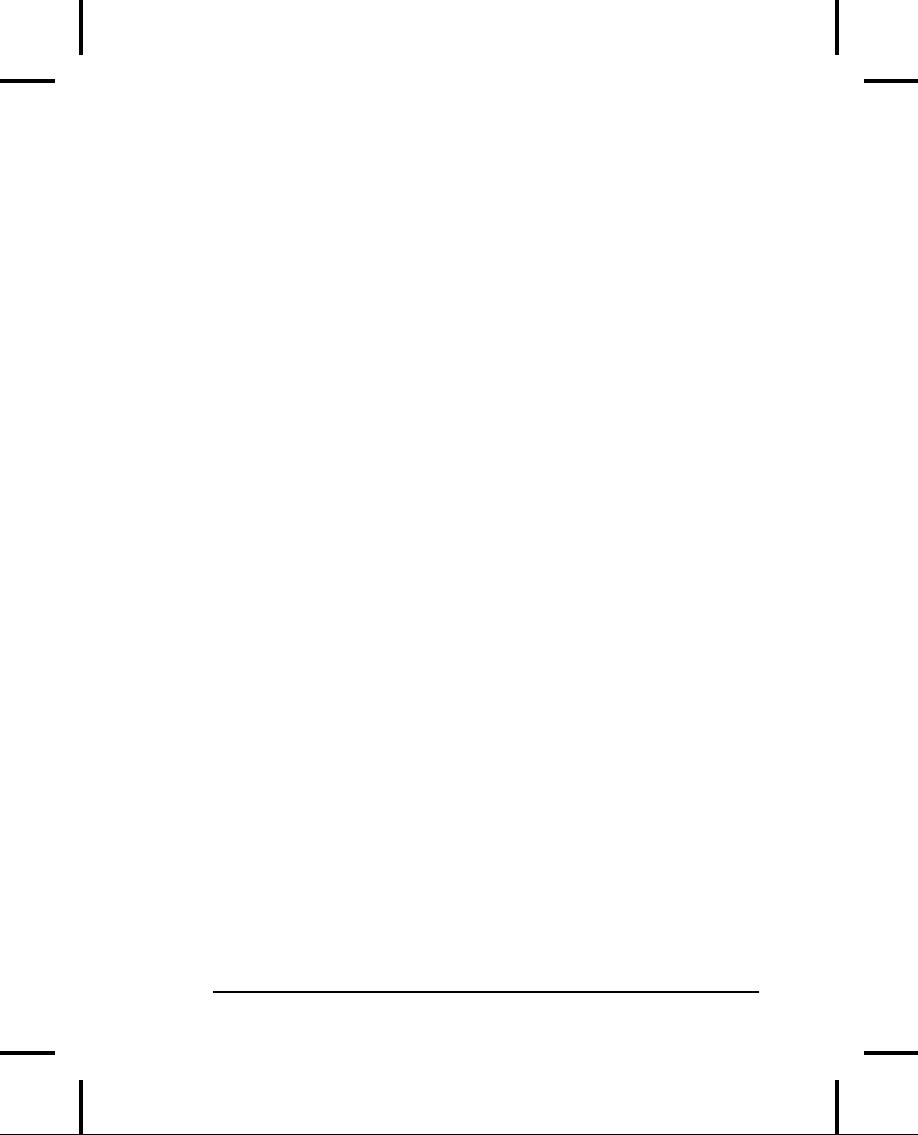
it's
called "Thinking in C: Foundations for
Java and C++." It
introduces
you to the aspects of C that are
necessary for you to
move
on to C++ or Java, leaving out the
nasty bits that C
programmers
must deal with on a day-to-day basis but
that the
C++
and Java languages steer you away from
(or even eliminate,
in
the
case of Java).
So
the short answer to the
question "what's different in the
2nd
edition?"
is: what isn't brand new has
been rewritten, sometimes
to
the
point where you wouldn't recognize
the original examples
and
material.
What's
in Volume 2 of this book
The
completion of the C++ Standard
also added a number of
important
new libraries, such as string
and
the containers and
algorithms
in the Standard C++ Library, as well as
new complexity
in
templates. These and other
more advanced topics have
been
relegated
to Volume 2 of this book, including
issues such as
multiple
inheritance, exception handling,
design patterns, and
topics
about building and debugging
stable systems.
How
to get Volume 2
Just
like the book you currently
hold, Thinking
in C++, Volume 2 is
downloadable
in its entirety from my Web
site at
. You can
find information on the Web
site
about
the expected print date of Volume
2.
The
Web site also contains
the source code for both of
the books,
along
with updates and information about
other seminars-on-CD
ROM
that MindView, Inc. offers,
public seminars, and
in-house
training,
consulting, mentoring, and
walkthroughs.
Preface
3
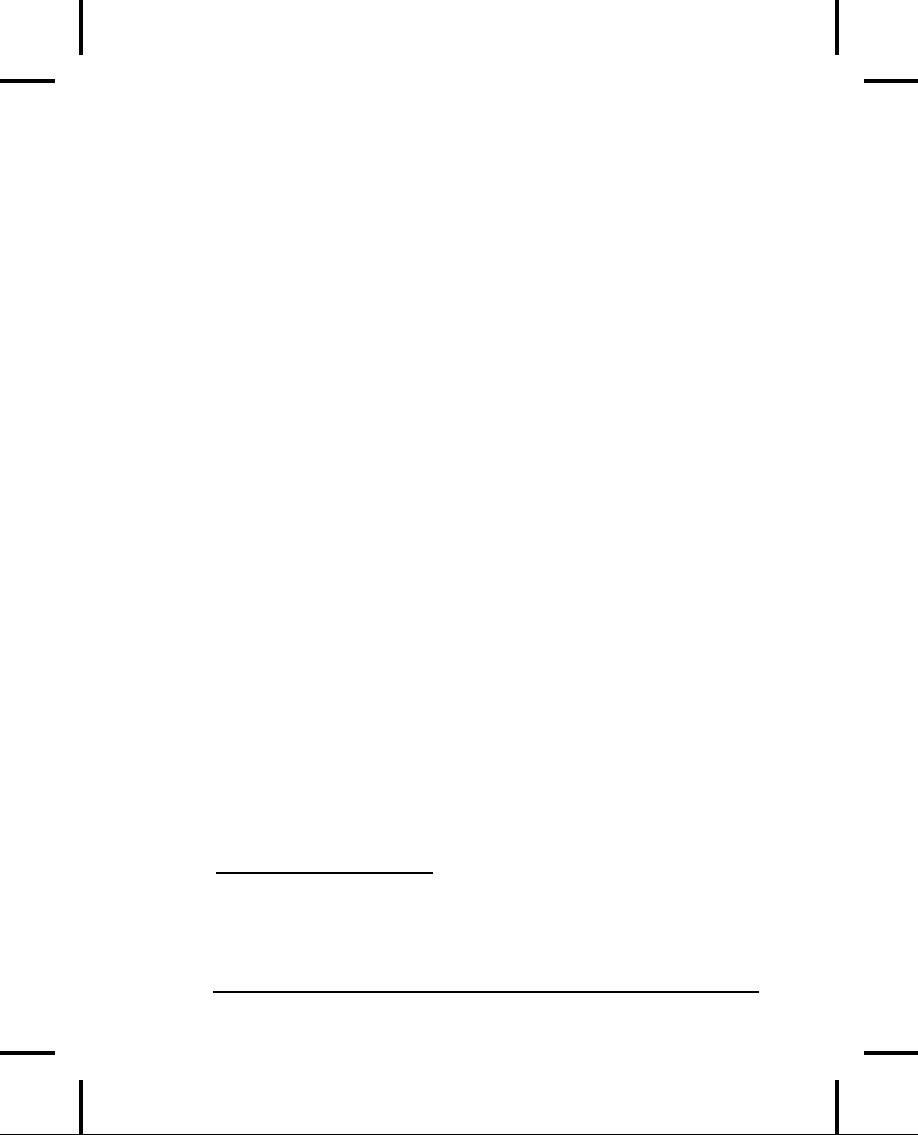
Prerequisites
In
the first edition of this
book, I decided to assume
that someone
else
had taught you C and that you have at
least a reading level
of
comfort
with it. My primary focus was on
simplifying what I found
difficult:
the C++ language. In this
edition I have added a
chapter
that
is a rapid introduction to C, along with
the Thinking
in C
seminar-on-CD,
but I am still assuming that you
already have some
kind
of programming experience. In addition,
just as you learn
many
new words intuitively by seeing them in
context in a novel,
it's
possible to learn a great
deal about C from the
context in which
it
is used in the rest of the
book.
Learning
C++
I
clawed my way into C++ from exactly the
same position I
expect
many
of the readers of this book
are in: as a programmer with a
very
no-nonsense, nuts-and-bolts attitude
about programming.
Worse,
my background and experience was in
hardware-level
embedded
programming, in which C has often
been considered a
high-level
language and an inefficient overkill for
pushing bits
around.
I discovered later that I
wasn't even a very good
C
programmer,
hiding my ignorance of structures,
malloc(
)and
free(
),
setjmp(
)and
longjmp(
) and
other "sophisticated"
,
concepts,
scuttling away in shame when the
subjects came up in
conversation
instead of reaching out for new
knowledge.
When
I began my struggle to understand
C++, the only decent
was
left to simplify the basic
concepts on my own. This resulted
in
experience.
That was designed as a reader's
guide to bring
1
Bjarne Stroustrup,
The
C++ Programming Language,
Addison-Wesley, 1986 (first
edition).
2
Using
C++,
Osborne/McGraw-Hill 1989.
4
Thinking
in C++
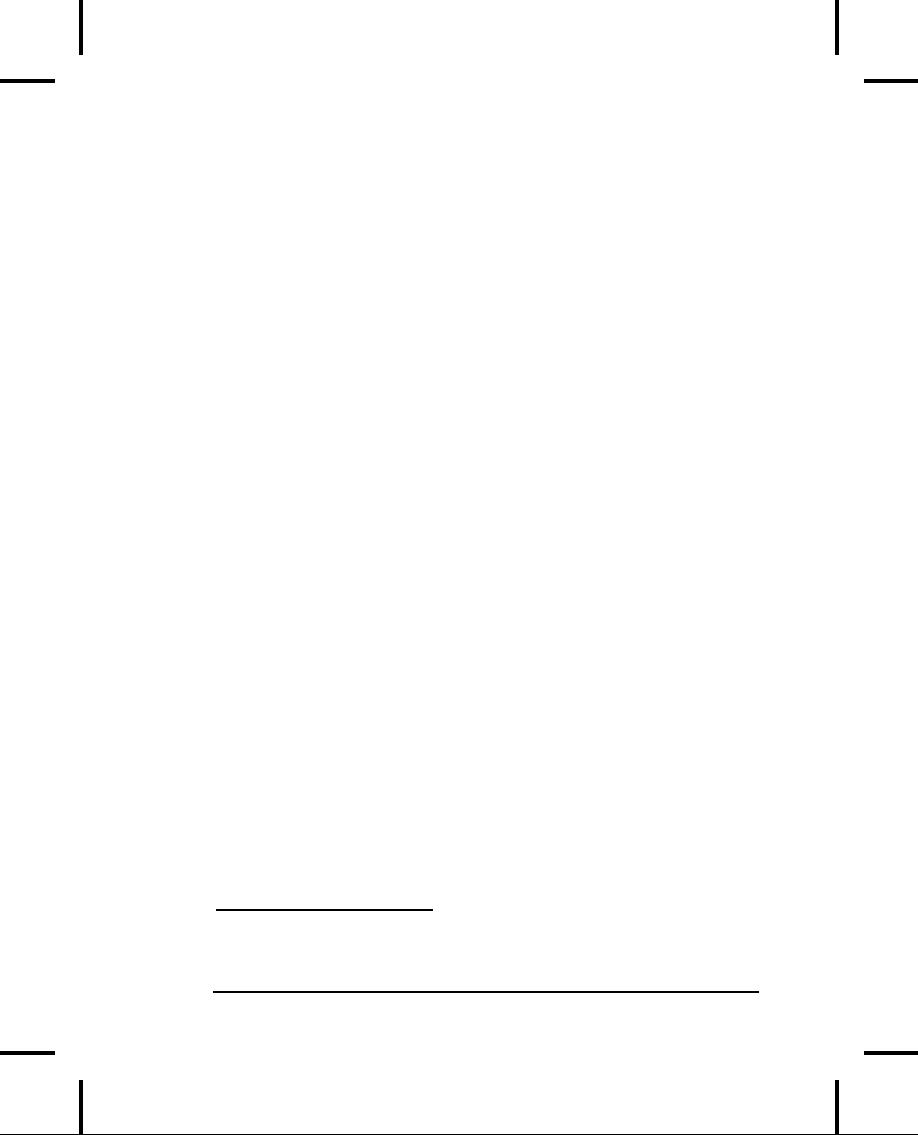
the
book garnered enthusiastic
response.
At
about the same time
that Using
C++ came
out, I began teaching
the
language in seminars and presentations.
Teaching C++ (and
later,
Java) became my profession; I've
seen nodding heads,
blank
faces,
and puzzled expressions in audiences all
over the world
since
1989. As I began giving
in-house training to smaller
groups of
people,
I discovered something during the
exercises. Even those
people
who were smiling and nodding
were confused about
many
issues.
I found out, by creating and chairing
the C++ and Java
tracks
at the Software Development
Conference for many years,
that
I and other speakers tended to
give the typical audience
too
many
topics, too fast. So
eventually, through both variety in
the
audience
level and the way that I
presented the material, I
would
end
up losing some portion of
the audience. Maybe it's
asking too
much,
but because I am one of those
people resistant to
traditional
lecturing
(and for most people, I
believe, such resistance
results
from
boredom), I wanted to try to keep
everyone up to speed.
For
a time, I was creating a number of
different presentations in
fairly
short order. Thus, I ended
up learning by experiment and
iteration
(a technique that also works well in C++
program design).
Eventually
I developed a course using
everything I had learned
from
my teaching experience. It tackles
the learning problem
in
discrete,
easy-to-digest steps and for a hands-on
seminar (the ideal
learning
situation) there are
exercises following each of
the
presentations.
You can find out about my public
seminars at
, and you
can also learn about
the seminars that
I've
turned into CD ROMs.
The
first edition of this book
developed over the course of
two
years,
and the material in this
book has been road-tested in
many
forms
in many different seminars. The
feedback that I've
gotten
3
Using
C++ and
C++
Inside & Out,
Osborne/McGraw-Hill 1993.
Preface
5
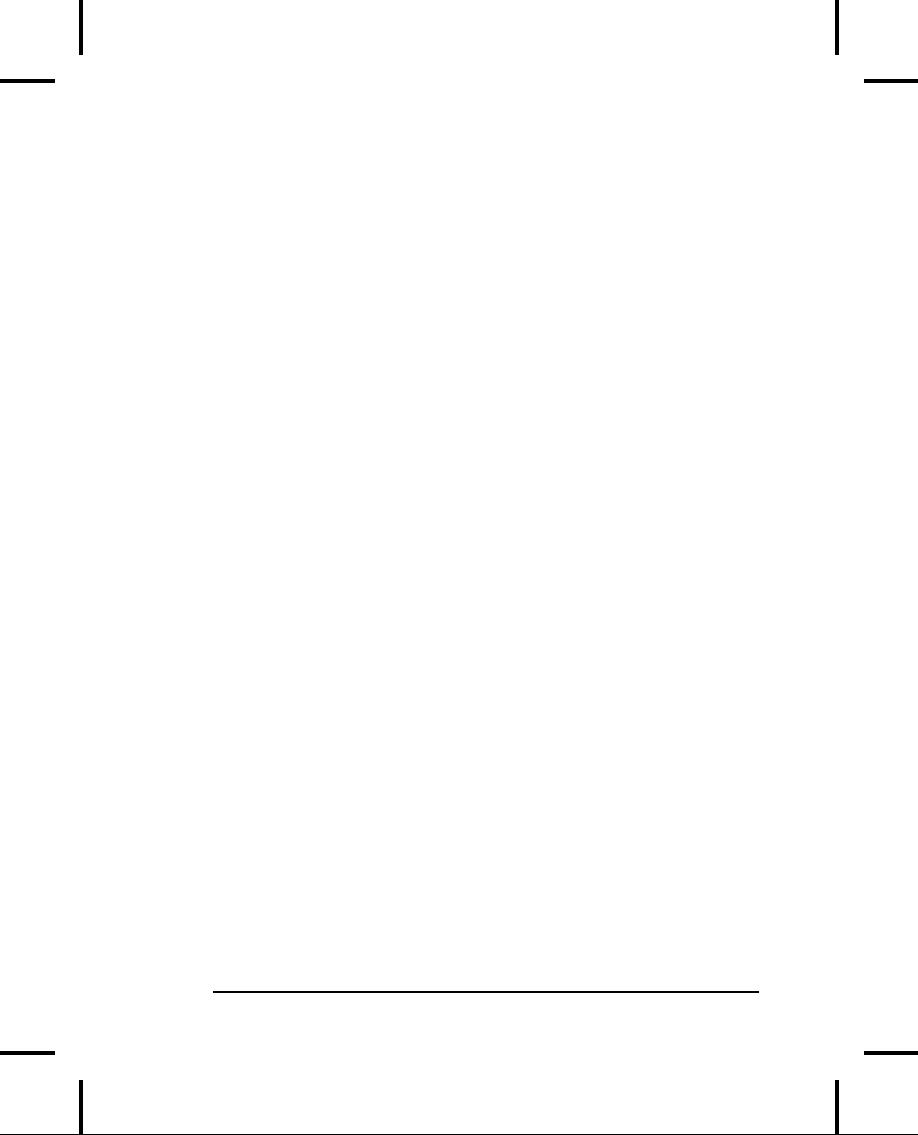
from
each seminar has helped me
change and refocus the
material
until
I feel it works well as a teaching
medium. But it isn't just
a
seminar
handout; I tried to pack as much
information as I could
within
these pages, and structure it to draw you
through onto the
next
subject. More than anything, the
book is designed to serve
the
solitary
reader who is struggling with a new
programming
language.
Goals
My
goals in this book are
to:
1.
Present
the material one simple
step at a time, so the
reader
can
easily digest each concept
before moving on.
2.
Use
examples that are as simple
and short as possible.
This
often
prevents me from tackling "real world"
problems, but
I've
found that beginners are usually
happier when they can
understand
every detail of an example
rather than being
impressed
by the scope of the problem
it solves. Also,
there's
a
severe limit to the amount of code
that can be absorbed in
a
classroom
situation. For this I
sometimes receive criticism
for
using
"toy examples," but I'm willing to accept
that in favor
of
producing something pedagogically
useful.
3.
Carefully
sequence the presentation of
features so that you
aren't
seeing something you haven't
been exposed to. Of
course,
this isn't always possible;
in those situations, a
brief
introductory
description will be given.
4.
Give
you what I think is important for you to
understand
about
the language, rather than
everything that I know. I
believe
there is an "information importance
hierarchy," and
there
are some facts that 95
percent of programmers will
never
need to know and that would just
confuse them and
add
to their perception of the
complexity of the language.
To
take
an example from C, if you memorize the
operator
6
Thinking
in C++
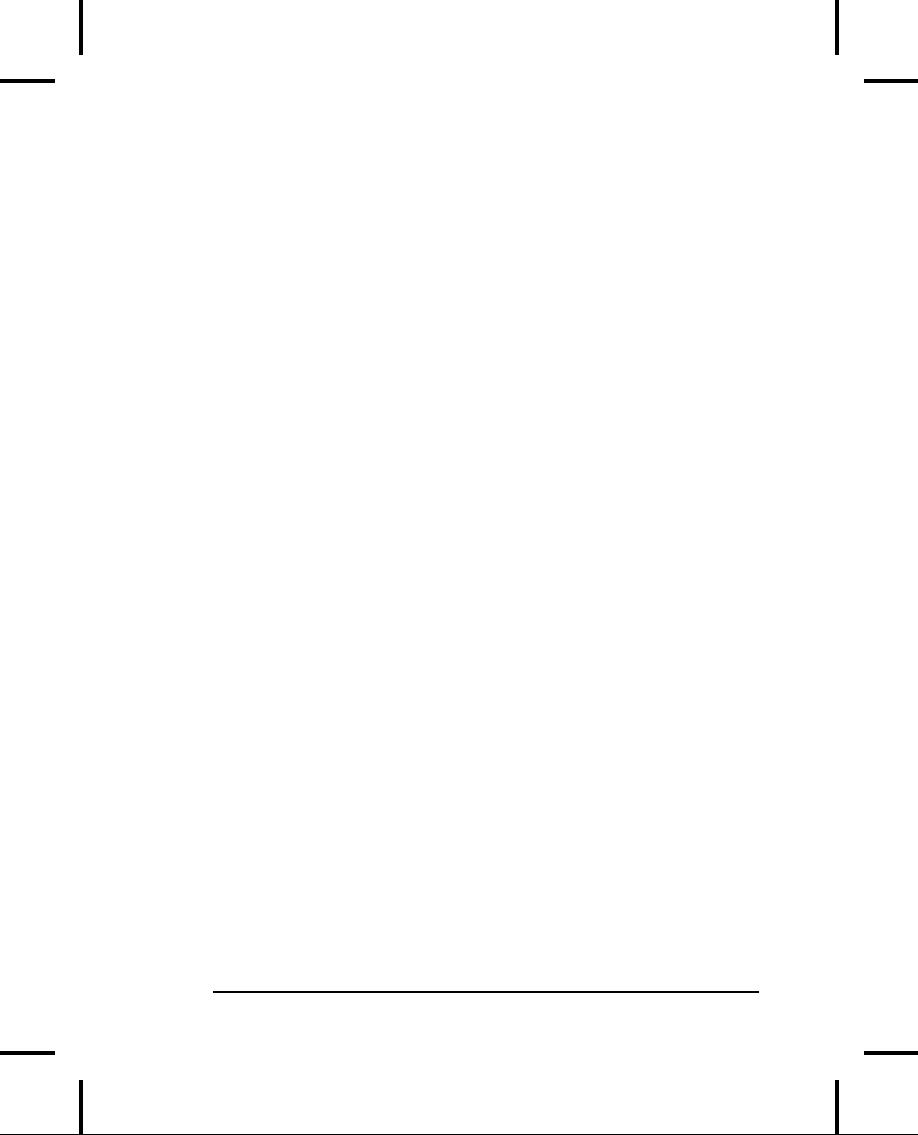
precedence
table (I never did), you can
write clever code. But
if
you
have to
think about it, it will confuse
the
reader/maintainer
of that code. So forget
about precedence,
and
use parentheses when things
aren't clear. This
same
attitude
will be taken with some information in
the C++
language,
which I think is more important for
compiler
writers
than for programmers.
5.
Keep
each section focused enough
so the lecture time
and
the
time between exercise
periods is reasonable. Not
only
does
this keep the audience's
minds more active and
involved
during a hands-on seminar, it gives
the reader a
greater
sense of accomplishment.
6.
Provide
readers with a solid foundation so they
can
understand
the issues well enough to move on to
more
difficult
coursework and books (in particular,
Volume 2 of
this
book).
7.
I've
tried not to use any particular
vendor's version of C++
because,
for learning the language, I don't think
that the
details
of a particular implementation are as
important as the
language
itself. Most vendors' documentation
concerning
their
own implementation specifics is
adequate.
Chapters
C++
is a language in which new and different
features are built on
top
of an existing syntax. (Because of
this, it is referred to as a
hybrid
object-oriented
programming language.) As more
people
pass
through the learning curve, we've
begun to get a feel for
the
way
programmers move through the stages of
the C++ language
features.
Because it appears to be the
natural progression of
the
procedurally-trained
mind, I decided to understand and follow
this
same
path and accelerate the
process by posing and answering
the
questions
that came to me as I learned
the language and
those
questions
that came from audiences as I
taught the language.
Preface
7
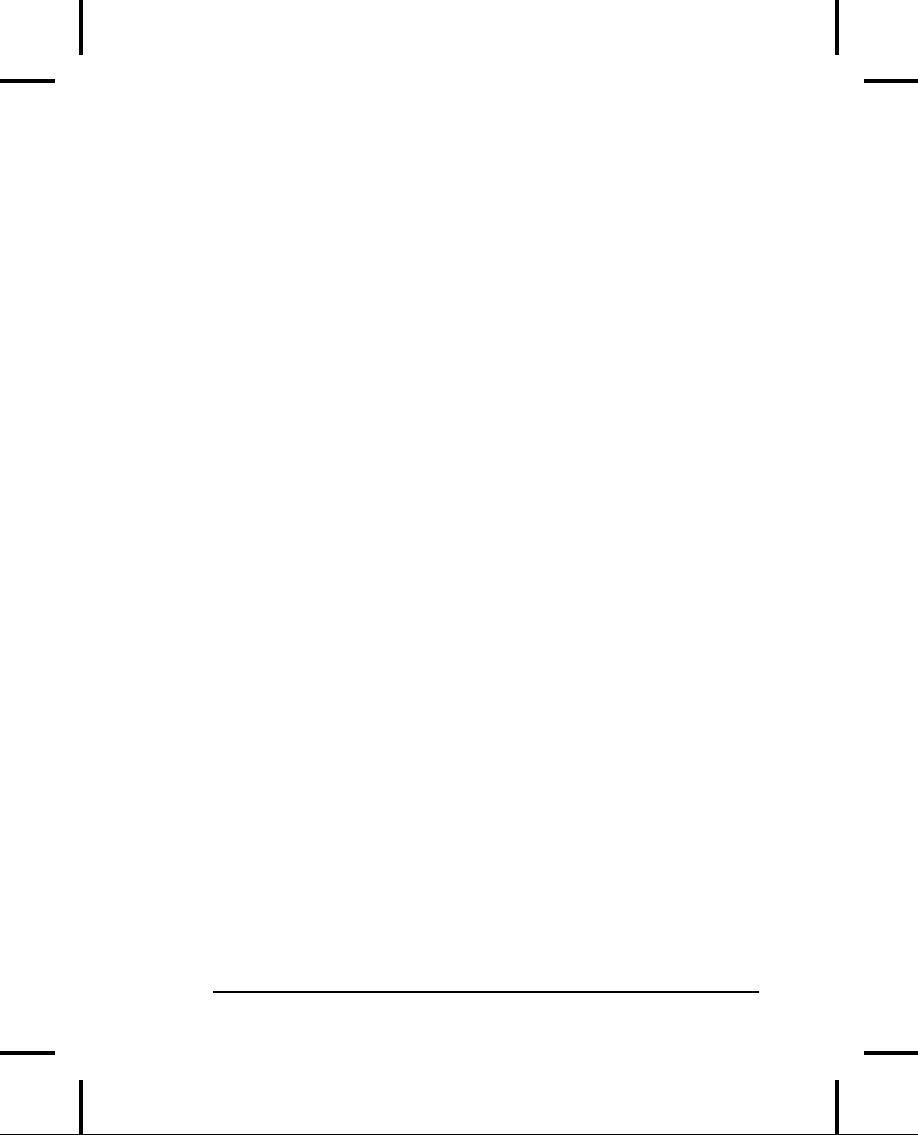
This
course was designed with one
thing in mind: to streamline the
process
of learning C++. Audience
feedback helped me
understand
which
parts were difficult and
needed extra illumination. In
the
areas
in which I got ambitious and included
too many features all
at
once, I came to know through the
process of presenting
the
material
that if you include a lot of new
features, you have to
explain
them all, and the student's
confusion is easily
compounded.
As a result, I've taken a great
deal of trouble to
introduce
the features as few at a time as
possible; ideally, only
one
major
concept at a time per
chapter.
The
goal, then, is for each
chapter to teach a single
concept, or a
small
group of associated concepts, in such a
way that no
additional
features are relied upon. That way you
can digest each
piece
in the context of your current
knowledge before moving
on.
To
accomplish this, I leave
some C features in place for
longer than
I
would prefer. The benefit is
that you will not be confused by
seeing
all the C++ features used
before they are explained, so
your
introduction
to the language will be gentle and will
mirror the way
you
will assimilate the features if
left to your own devices.
Here
is a brief description of the
chapters contained in this
book:
Chapter
1: Introduction to Objects
.
When projects became too
big
and
complicated to easily maintain,
the "software crisis" was
born,
with
programmers saying, "We can't
get projects done, and if
we
can,
they're too expensive!" This
precipitated a number of
responses,
which are discussed in this
chapter along with the
ideas
of
object-oriented programming (OOP) and how
it attempts to
solve
the software crisis. The
chapter walks you through the
basic
concepts
and features of OOP and also
introduces the analysis
and
design
process. In addition, you'll learn
about the benefits
and
concerns
of adopting the language and
suggestions for moving into
the
world of C++.
Chapter
2: Making and Using
Objects
.
This chapter explains
the
process
of building programs using
compilers and libraries. It
8
Thinking
in C++
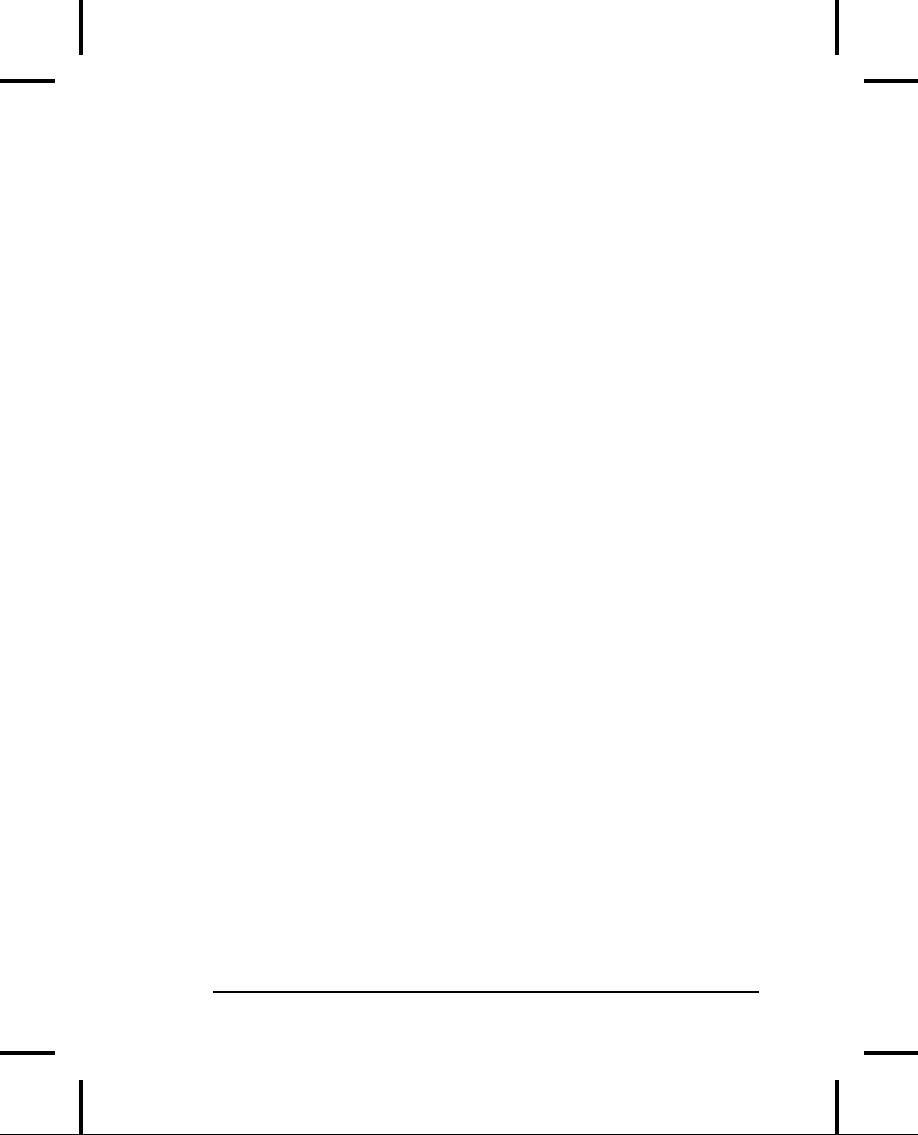
introduces
the first C++ program in the
book and shows how
programs
are constructed and compiled. Then
some of the basic
libraries
of objects available in Standard C++
are introduced. By
the
time
you finish this chapter you'll
have a good grasp of what
it
means
to write a C++ program using
off-the-shelf object
libraries.
Chapter
3: The C in C++This
chapter is a dense overview of
the
.
features
in C that are used in C++,
as well as a number of basic
features
that are available only in
C++. It also introduces
the
"make"
utility that's common in the
software development world
and
that is used to build all the
examples in this book (the
source
code
for the book, which is available at
,
contains
makefiles for each chapter).
Chapter 3 assumes that
you
have
a solid grounding in some
procedural programming
language
like
Pascal, C, or even some
flavors of Basic (as long as
you've
written
plenty of code in that language,
especially functions). If you
find
this chapter a bit too much,
you should first go through
the
Thinking
in C seminar on
the CD that's bound with this
book (and
also
available at ).
Chapter
4: Data Abstraction
.
Most features in C++ revolve
around
the
ability to create new data
types. Not only does this
provide
superior
code organization, but it lays
the groundwork for more
powerful
OOP abilities. You'll see how
this idea is facilitated by
the
simple
act of putting functions inside
structures, the details of
how
to
do it, and what kind of code it creates.
You'll also learn the
best
way
to organize your code into header
files and implementation
files.
Chapter
5: Hiding the Implementation
.
You can decide that
some
of
the data and functions in your
structure are unavailable to
the
user
of the new type by making them private.
This means that you
can
separate the underlying implementation
from the interface
that
the
client programmer sees, and thus allow
that implementation to
be
easily changed without affecting
client code. The keyword
class
is
also introduced as a fancier way to
describe a new data type,
and
Preface
9
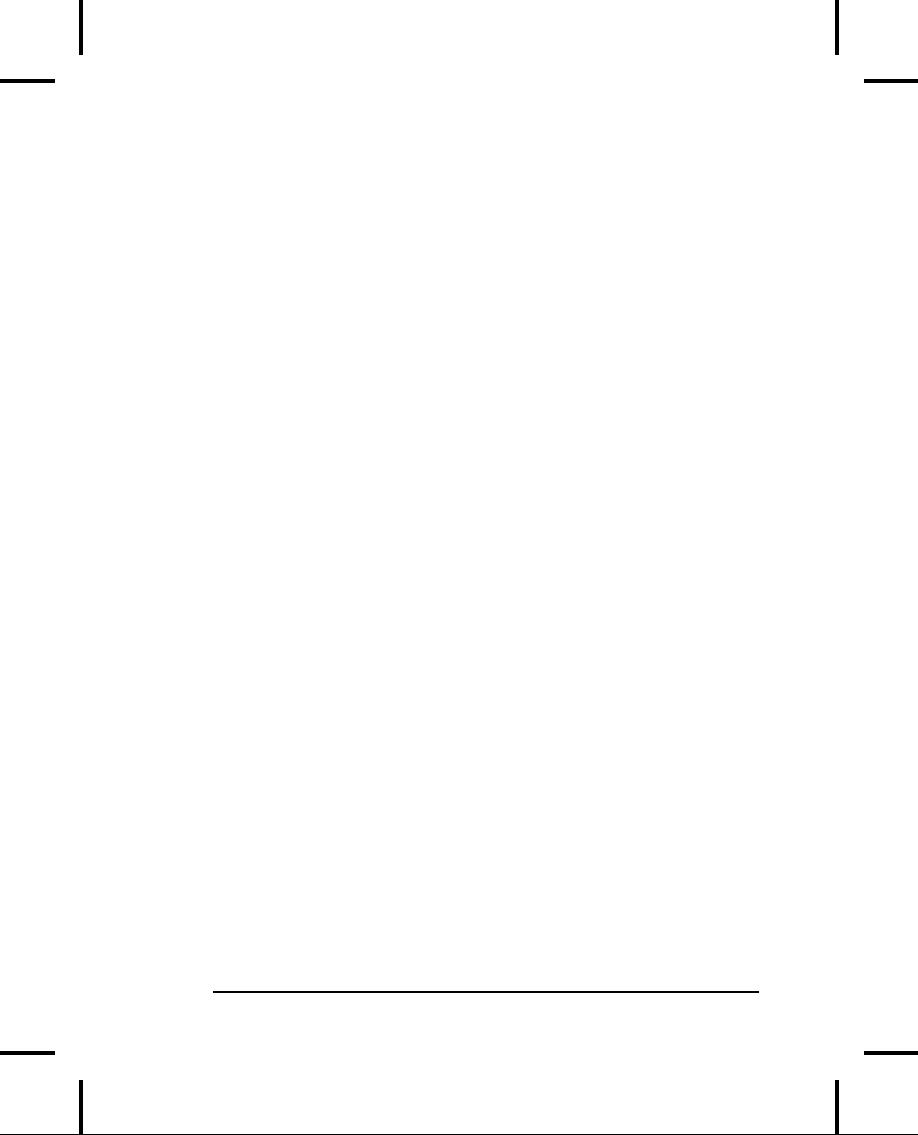
the
meaning of the word "object" is
demystified (it's a
fancy
variable).
Chapter
6: Initialization and
Cleanup
.
One of the most common
C
errors
results from uninitialized variables.
The constructor
in C++
allows
you to guarantee that variables of your
new data type
("objects
of your class") will always be
initialized properly. If your
objects
also require some sort of
cleanup, you can guarantee
that
this
cleanup will always happen with
the C++ destructor.
Chapter
7: Function Overloading and
Default Arguments is
.
C++
intended
to help you build big, complex
projects. While doing
this,
you
may bring in multiple libraries that
use the same
function
name,
and you may also choose to use
the same name with
different
meanings within a single library. C++
makes this easy
with
function
overloading, which
allows you to reuse the
same
function
name as long as the argument
lists are different.
Default
arguments
allow you to call the same
function in different ways by
automatically
providing default values for
some of your
arguments.
Chapter
8: ConstantsThis
chapter covers the const
and
volatile
.
keywords,
which have additional meaning in
C++, especially
inside
classes. You'll learn what it means to
apply const
to
a pointer
definition.
The chapter also shows how
the meaning of const
varies
when
used inside and outside of
classes and how to create
compile-
time
constants inside
classes.
Chapter
9: Inline Functions
.
Preprocessor macros
eliminate
function
call overhead, but the
preprocessor also
eliminates
valuable
C++ type checking. The inline
function gives you all
the
benefits
of a preprocessor macro plus all of the
benefits of a real
function
call. This chapter thoroughly
explores the
implementation
and
use of inline
functions.
Chapter
10: Name ControlCreating
names is a fundamental
.
activity
in programming, and when a project gets
large, the number
10
Thinking
in C++
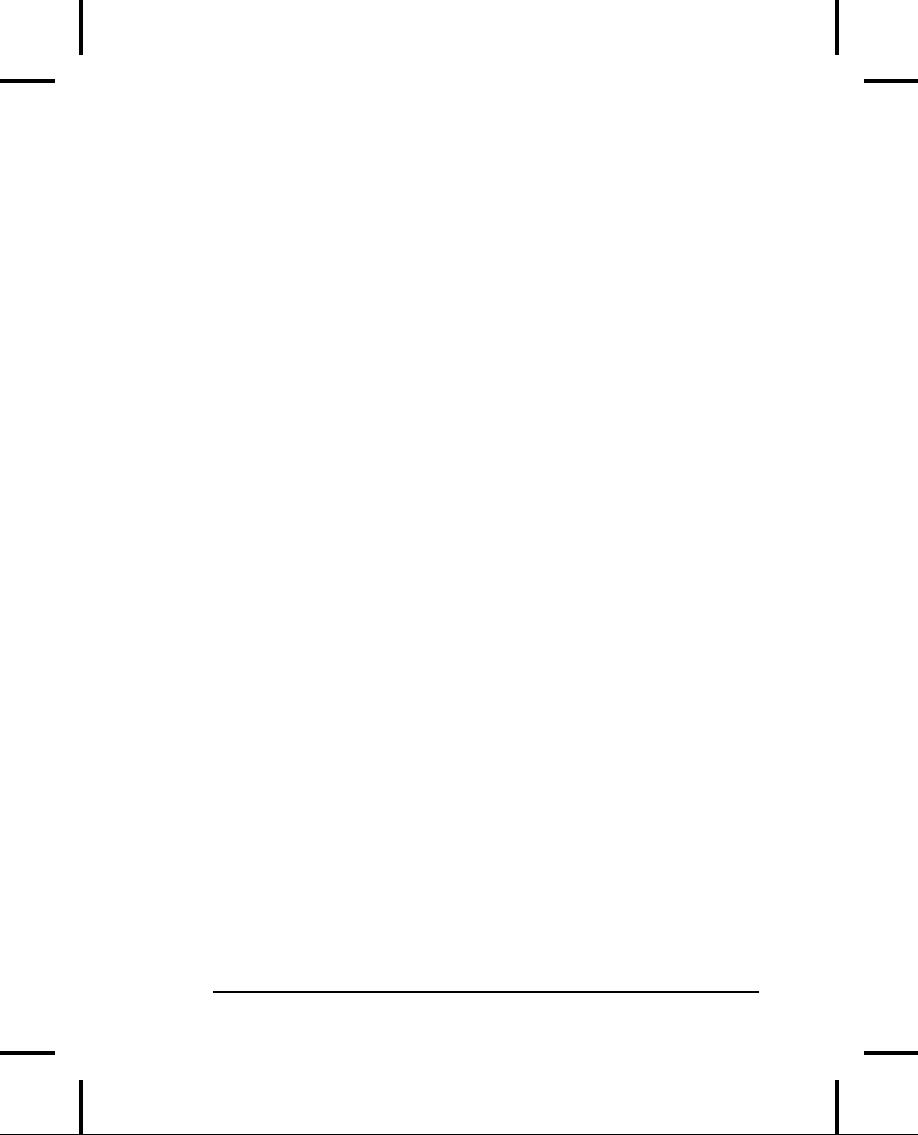
of
names can be overwhelming. C++
allows you a great deal
of
control
over names in terms of their
creation, visibility,
placement
of
storage, and linkage. This
chapter shows how names
are
controlled
in C++ using two techniques. First,
the static
keyword
is
used
to control visibility and linkage, and
its special meaning
with
classes
is explored. A far more
useful technique for
controlling
names
at the global scope is C++'s
namespacefeature,
which
allows
you to break up the global
name space into distinct
regions.
Chapter
11: References and the
Copy-Constructor pointers
.
C++
work
like C pointers with the
additional benefit of stronger
C++
type
checking. C++ also provides an
additional way to handle
addresses:
from Algol and Pascal, C++ lifts the
reference,
which
lets
the
compiler handle the address
manipulation while you use
ordinary
notation. You'll also meet
the copy-constructor, which
controls
the way objects are passed
into and out of functions by
value.
Finally, the C++ pointer-to-member is
illuminated.
Chapter
12: Operator
Overloading
.
This feature is
sometimes
called
"syntactic sugar;" it lets you
sweeten the syntax for
using
your
type by allowing operators as well as
function calls. In
this
chapter
you'll learn that operator
overloading is just a
different
type
of function call and you'll learn how to
write your own,
dealing
with the sometimes-confusing uses of
arguments, return
types,
and the decision of whether to
make an operator a
member
or
friend.
Chapter
13: Dynamic Object
Creation
.
How many planes will an
air-traffic
system need to manage? How many
shapes will a CAD
system
require? In the general
programming problem, you
can't
know
the quantity, lifetime, or type of
objects needed by your
running
program. In this chapter, you'll
learn how C++'s new
and
delete
elegantly
solve this problem by safely
creating objects on
the
heap.
You'll also see how new
and
delete
can
be overloaded in a
variety
of ways so you can control how storage is
allocated and
released.
Preface
11
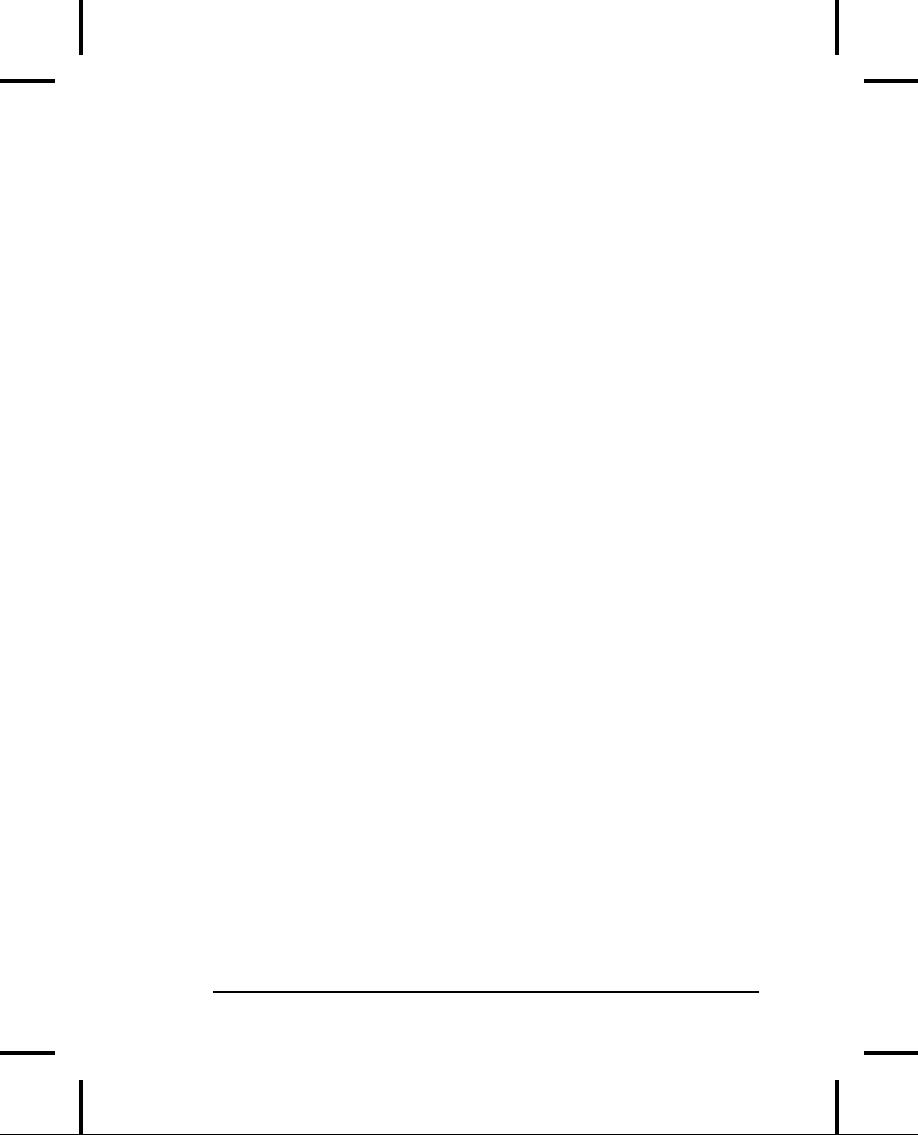
Chapter
14: Inheritance and
Composition
.
Data abstraction
allows
you
to create new types from scratch, but
with composition and
inheritance,
you can create new types from
existing types. With
composition,
you assemble a new type using other
types as pieces,
and
with inheritance, you create a more
specific version of an
existing
type. In this chapter you'll
learn the syntax, how
to
redefine
functions, and the importance of
construction and
destruction
for inheritance and composition.
Chapter
15: Polymorphism and virtual
Functions your
own,
.
On
you
might take nine months to
discover and understand
this
cornerstone
of OOP. Through small, simple examples,
you'll see
how
to create a family of types with
inheritance and manipulate
objects
in that family through their common base
class. The virtual
keyword
allows you to treat all objects in
this family generically,
which
means that the bulk of your
code doesn't rely on
specific
type
information. This makes your
programs extensible, so
building
programs and code maintenance is
easier and cheaper.
Chapter
16: Introduction to
Templates
.
Inheritance and
composition
allow you to reuse object code, but
that doesn't solve
all
of your reuse needs. Templates allow you
to reuse source
code
by
providing the compiler with a way to
substitute type names in
the
body of a class or function. This
supports the use of container
class
libraries,
which are important tools for
the rapid, robust
development
of object-oriented programs (the
Standard C++
Library
includes a significant library of
container classes).
This
chapter
gives you a thorough grounding in
this essential
subject.
Additional
topics (and more advanced
subjects) are available
in
Volume
2 of this book, which can be
downloaded from the Web
site
.
12
Thinking
in C++
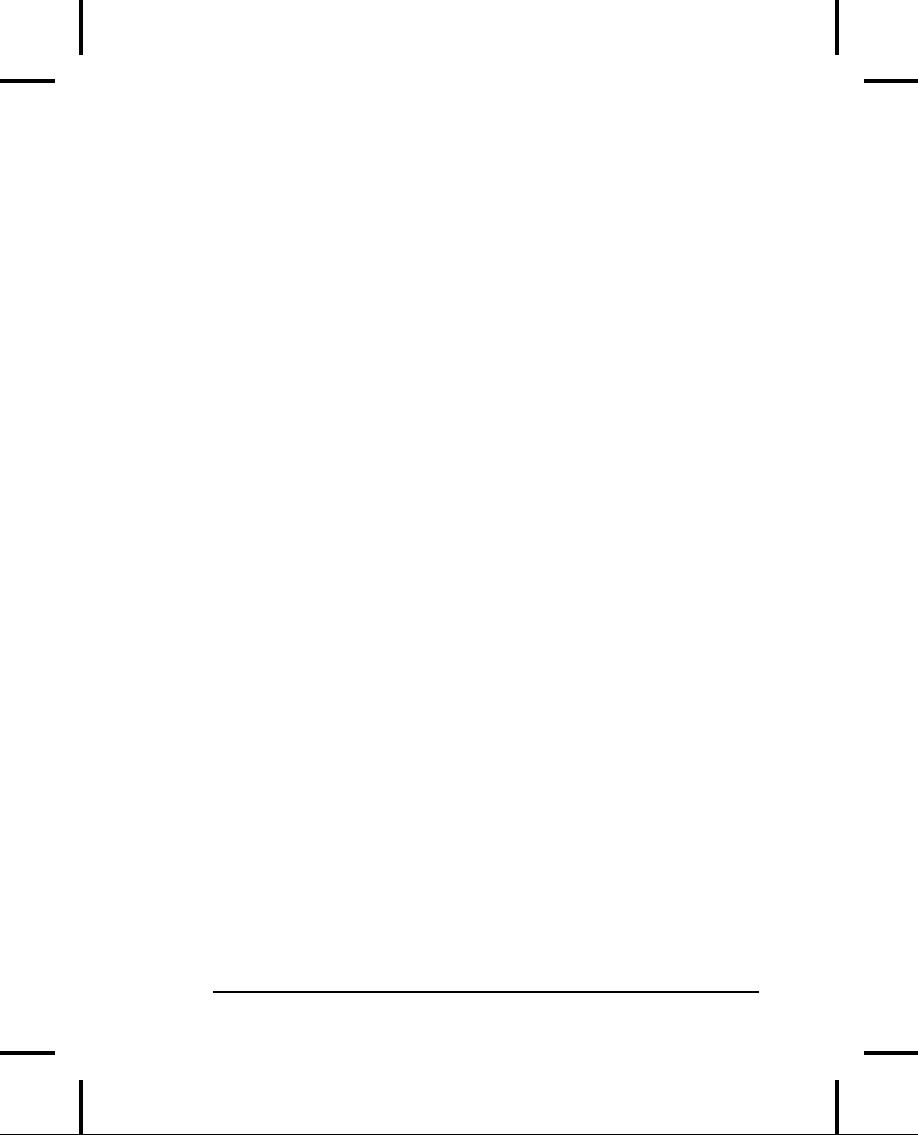
Exercises
I've
discovered that exercises
are exceptionally useful during
a
seminar
to complete a student's understanding, so
you'll find a set
at
the end of each chapter.
The number of exercises has
been
greatly
increased over the number in
the first edition.
Many
of the exercises are fairly
simple so that they can be
finished
in
a reasonable amount of time in a
classroom situation or
lab
section
while the instructor observes,
making sure all students
are
absorbing
the material. Some exercises
are a bit more challenging
to
keep
advanced students entertained.
The bulk of the exercises
are
designed
to be solved in a short time and
are intended only to
test
and
polish your knowledge rather than
present major
challenges
(presumably,
you'll find those on your own or more
likely, they'll
find
you).
Exercise
solutions
Solutions
to selected exercises can be found in
the electronic
document
The
Thinking in C++ Annotated
Solution Guide,
available
for
a small fee from .
Source
code
The
source code for this book is
copyrighted freeware,
distributed
via
the Web site . The
copyright prevents you
from
republishing the code in print
media without permission, but
you
are granted the right to use
it in many other situations (see
below).
The
code is available in a zipped
file, designed to be extracted
for
any
platform that has a "zip" utility
(most do; you can search
the
Internet
to find a version for your platform if you don't
already
have
one installed). In the
starting directory where you
unpacked
the
code you will find the following
copyright notice:
Preface
13
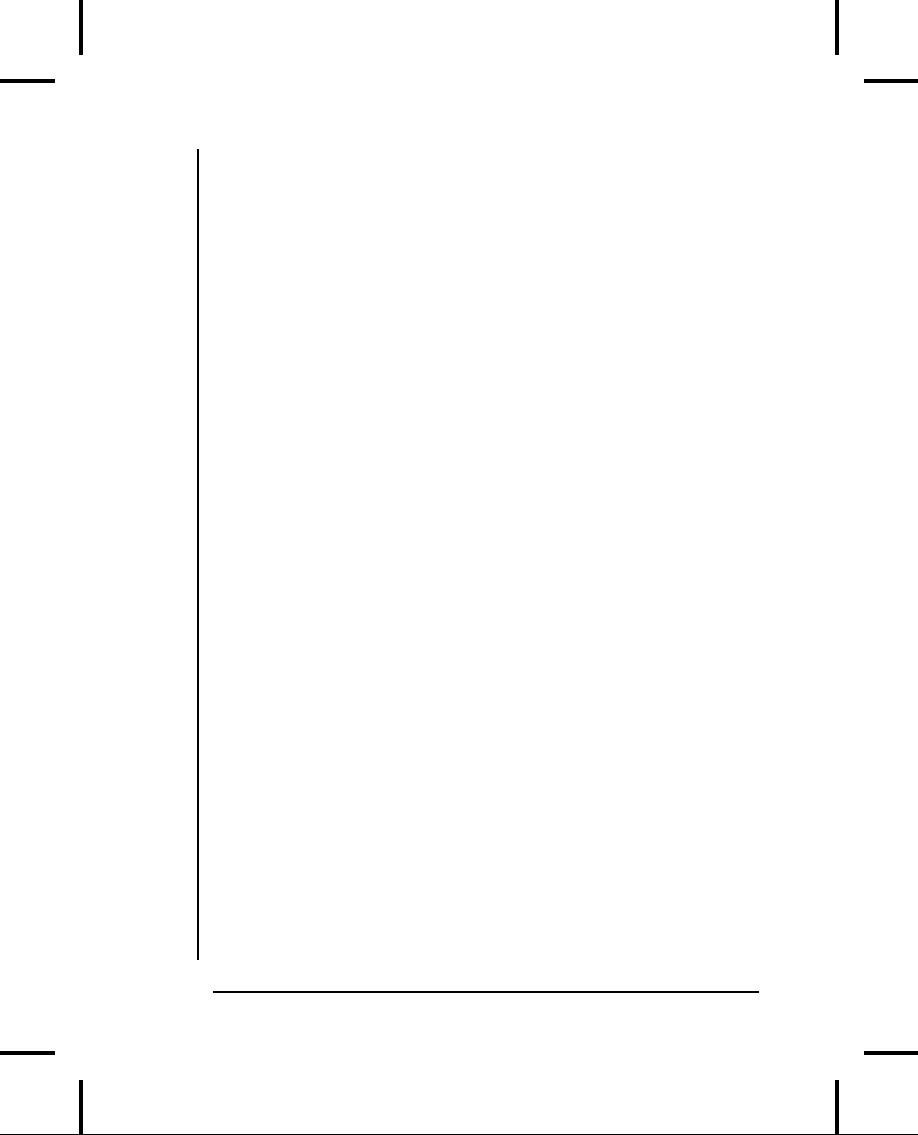
//:!
:Copyright.txt
Copyright
(c) 2000, Bruce
Eckel
Source
code file from the
book "Thinking in
C++"
All
rights reserved EXCEPT as
allowed by the
following
statements: You can freely
use this file
for
your own work (personal or
commercial),
including
modifications and distribution
in
executable
form only. Permission is
granted to use
this
file in classroom situations,
including its
use
in presentation materials, as long as
the book
"Thinking
in C++" is cited as the
source.
Except
in classroom situations, you
cannot copy
and
distribute this code;
instead, the sole
distribution
point is http://
(and
official mirror sites) where
it is
available
for free. You cannot
remove this
copyright
and notice. You cannot
distribute
modified
versions of the source code
in this
package.
You cannot use this
file in printed
media
without the express
permission of the
author.
Bruce Eckel makes no
representation about
the
suitability of this software
for any purpose.
It
is provided "as is" without
express or implied
warranty
of any kind, including any
implied
warranty
of merchantability, fitness for
a
particular
purpose, or non-infringement. The
entire
risk
as to the quality and
performance of the
software
is with you. Bruce Eckel
and the
publisher
shall not be liable for
any damages
suffered
by you or any third party as
a result of
using
or distributing this software. In no
event
will
Bruce Eckel or the publisher
be liable for
any
lost revenue, profit, or
data, or for direct,
indirect,
special, consequential, incidental,
or
punitive
damages, however caused and
regardless of
the
theory of liability, arising
out of the use of
or
inability to use software,
even if Bruce Eckel
and
the publisher have been
advised of the
possibility
of such damages. Should the
software
prove
defective, you assume the
cost of all
necessary
servicing, repair, or correction. If
you
think
you've found an error,
please submit the
correction
using the form you
will find at
.
(Please use the
same
form
for non-code errors found in
the book.)
14
Thinking
in C++
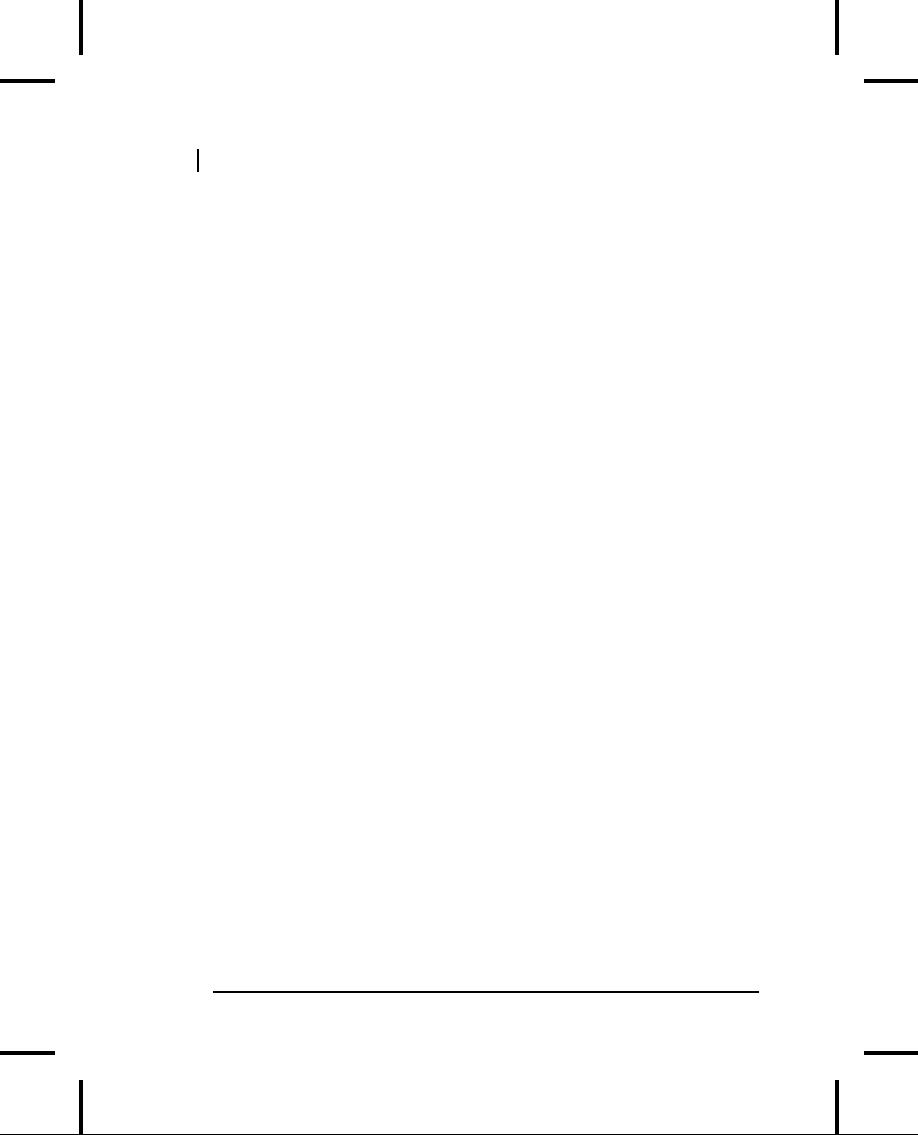
///:~
You
may use the code in your
projects and in the classroom as
long
as
the copyright notice is
retained.
Language
standards
Throughout
this book, when referring to
conformance to the ISO
C
standard,
I will generally just say
`C.' Only if it is necessary to
distinguish
between Standard C and older,
pre-Standard versions
of
C will I make a distinction.
At
this writing the C++ Standards
Committee was
finished
working
on the language. Thus, I will
use the term Standard
C++ to
refer
to the standardized language. If I simply
refer to C++ you
should
assume I mean "Standard
C++."
There
is some confusion over the
actual name of the C++
Standards
Committee
and the name of the standard
itself. Steve Clamage,
the
committee
chair, clarified
this:
There
are two C++ standardization
committees: The NCITS
(formerly
X3)
J16 committee and the ISO
JTC1/SC22/WG14 committee.
ANSI
charters
NCITS to create technical
committees for developing
American
national standards.
J16
was chartered in 1989 to create an
American standard for C++. In
about
1991 WG14 was chartered to create an
international standard.
The
J16 project was converted to
a "Type I" (International)
project
and
subordinated to the ISO standardization
effort.
The
two committees meet at the
same time at the same
location, and
the
J16 vote constitutes the
American vote on WG14. WG14
delegates
technical
work to J16. WG14 votes on the
technical work of J16.
The
C++ standard was originally
created as an ISO standard.
ANSI
later
voted (as recommended by
J16) to adopt the ISO
C++ standard as
the
American standard for C++.
Preface
15
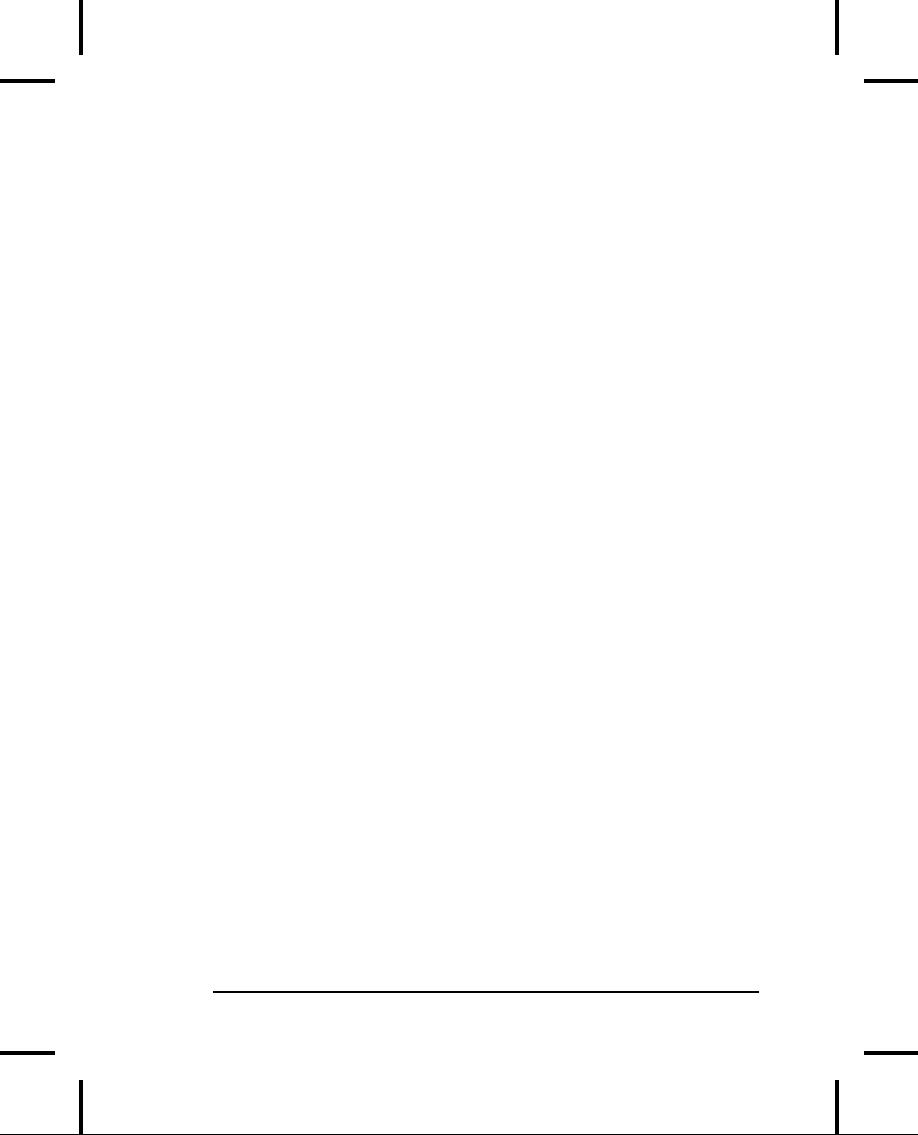
Thus,
`ISO' is the correct way to
refer to the C++
Standard.
Language
support
Your
compiler may not support all of the
features discussed in
this
book,
especially if you don't have the
newest version of the
compiler.
Implementing a language like C++ is a
Herculean task,
and
you can expect that the
features will appear in pieces
rather
than
all at once. But if you attempt one of
the examples in the
book
and
get a lot of errors from the
compiler, it's not necessarily a
bug
in
the code or the compiler; it
may simply not be implemented in
your
particular compiler
yet.
The
book's CD ROM
The
primary content of the CD ROM packaged in
the back of this
book
is a "seminar on CD ROM" titled Thinking
in C: Foundations for
Java
& C++ by Chuck
Allison (published by MindView, Inc.,
and
also
available in quantities at ). This
contains
many
hours of audio lectures and
slides, and can be viewed
on
most
computers if you have a CD ROM player and
a sound system.
The
goal of Thinking
in C is to take
you carefully through the
fundamentals
of the C language. It focuses on
the knowledge
necessary
for you to be able to move on to the C++ or
Java
languages
instead of trying to make you an expert
in all the dark
corners
of C. (One of the reasons for
using a higher-level
language
like
C++ or Java is precisely so we can
avoid many of these
dark
corners.)
It also contains exercises and
guided solutions. Keep
in
mind
that because Chapter 3 of
this book goes beyond
the Thinking
in
C CD,
the CD is not a replacement for that
chapter, but should be
used
instead as a preparation for this
book.
Please
note that the CD ROM is
browser-based, so you should
have
a
Web browser installed on your
machine before using
it.
16
Thinking
in C++
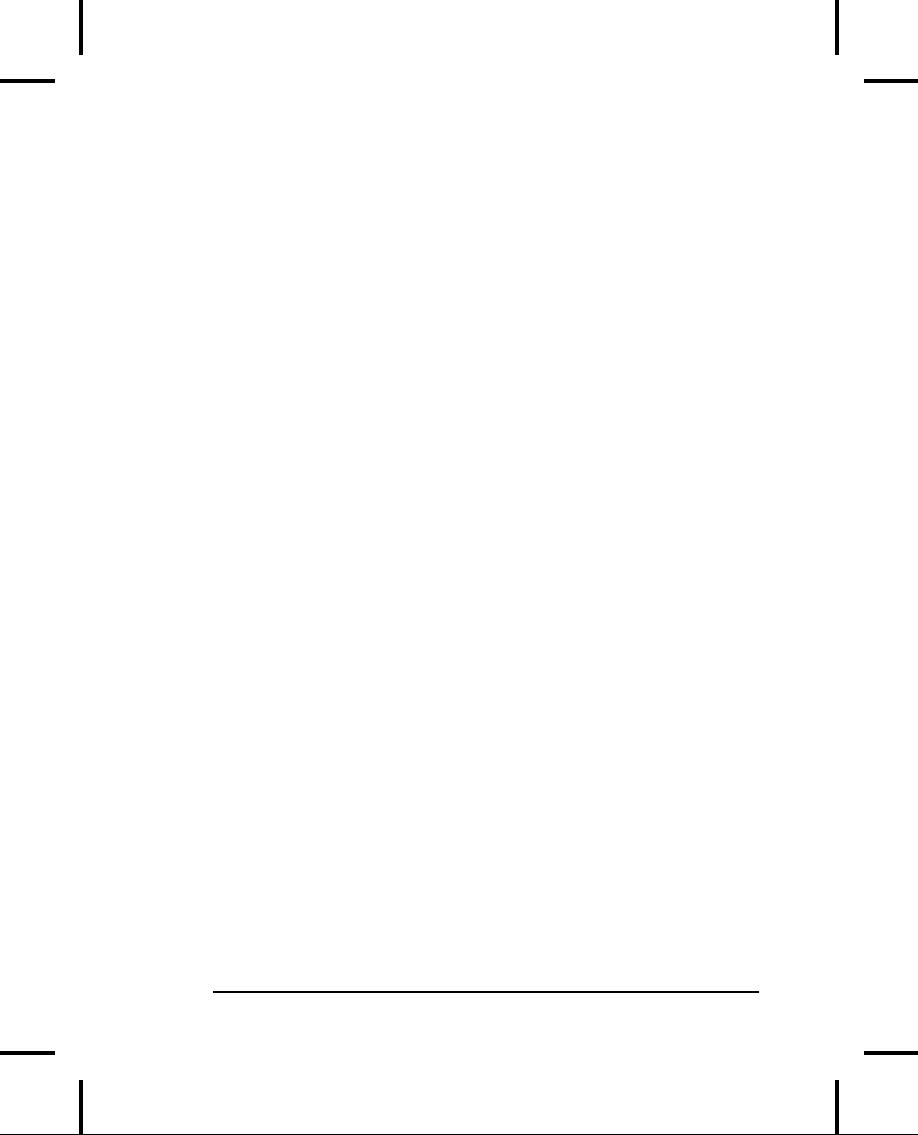
CD
ROMs, seminars,
and
consulting
There
are seminars-on-CD-ROM planned to
cover Volume 1 and
Volume
2 of this book. These
comprise many hours of
audio
lectures
by me that accompany slides
that cover selected
material
from
each chapter in the book.
They can be viewed on
most
computers
if you have a CD ROM player and a sound
system.
These
CDs may be purchased at , where
you
will
find more information and sample
lectures.
My
company, MindView, Inc., provides
public hands-on
training
seminars
based on the material in
this book and also on
advanced
topics.
Selected material from each
chapter represents a
lesson,
which
is followed by a monitored exercise
period so each
student
receives
personal attention. We also
provide on-site
training,
consulting,
mentoring, and design and code
walkthroughs.
Information
and sign-up forms for upcoming
seminars and other
contact
information can be found at .
I
am sometimes available for design
consulting, project
evaluation
and
code walkthroughs. When I first
began writing about
computers,
my primary motivation was to increase my
consulting
activities,
because I find consulting to be
challenging, educational,
and
one of my most enjoyable
experiences, professionally. Thus
I
will
try my best to fit you into my schedule, or to
provide you with
one
of my associates (who are people
that I know well and trust,
and
often people who co-develop and
teach seminars with
me).
Errors
No
matter how many tricks a writer uses to
detect errors, some
always
creep in and these often
leap off the page to a fresh
reader.
If
you discover anything you believe to be
an error, please use
the
correction
form you will find at . Your
help is
appreciated.
Preface
17
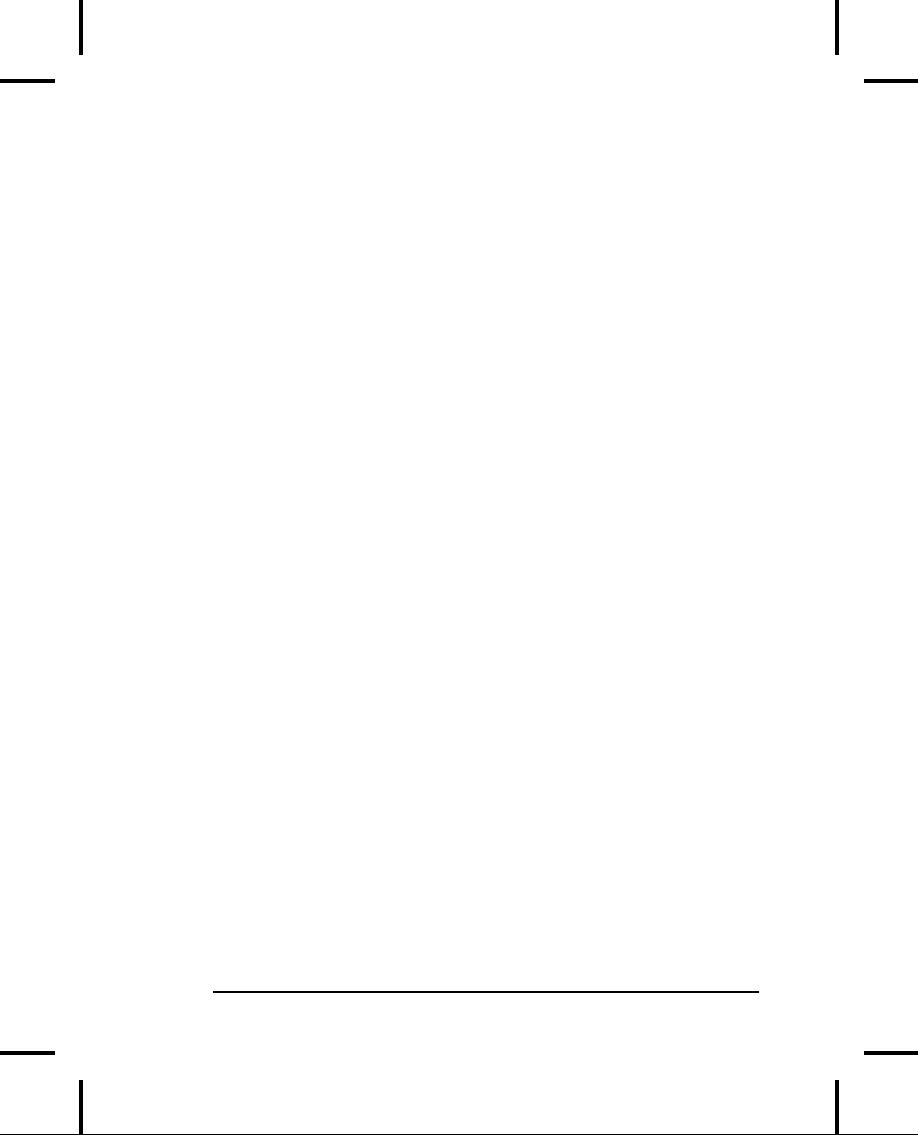
About
the cover
The
first edition of this book
had my face on the cover, but
I
originally
wanted a cover for the
second edition that was
more of a
work
of art like the Thinking
in Java cover.
For some reason, C++
seems
to me to suggest Art Deco with its
simple curves and
brushed
chrome. I had in mind something like
those posters of
ships
and airplanes with the long sweeping
bodies.
My
friend Daniel Will-Harris,
(www.Will-Harris.com) whom I
first
met
in junior high school choir class, went
on to become a world-
class
designer and writer. He has
done virtually all of my designs,
including
the cover for the first
edition of this book. During
the
cover
design process, Daniel,
unsatisfied with the progress we
were
making,
kept asking "How does this
relate people to
computers?"
We
were stuck.
On
a whim, with no particular outcome in mind, he
asked me to
put
my face on the scanner.
Daniel had one of his
graphics
programs
(Corel Xara, his favorite)
"autotrace" the scan of my
face.
As
he describes it, "Autotracing is
the computer's way to turn a
picture
into the kinds of lines and
curves it really likes." Then
he
played
with it until he had something that
looked like a
topographic
map of my face, an image that might be
the way a
computer
could see people.
I
took this image and
photocopied it onto watercolor
paper (some
color
copiers can handle thick
stock), and then started creating
lots
of
experiments by adding watercolor to
the image. We selected
the
ones
we liked best, then Daniel
scanned them back in and
arranged
them
into the cover, adding the
text and other design
elements. The
whole
process happened over
several months, mostly because
of
the
time it took me to do the
watercolors. But I've especially
enjoyed
it because I got to participate in
the art on the cover,
and
because
it gave me incentive to do more
watercolors (what they say
about
practice really is
true).
18
Thinking
in C++
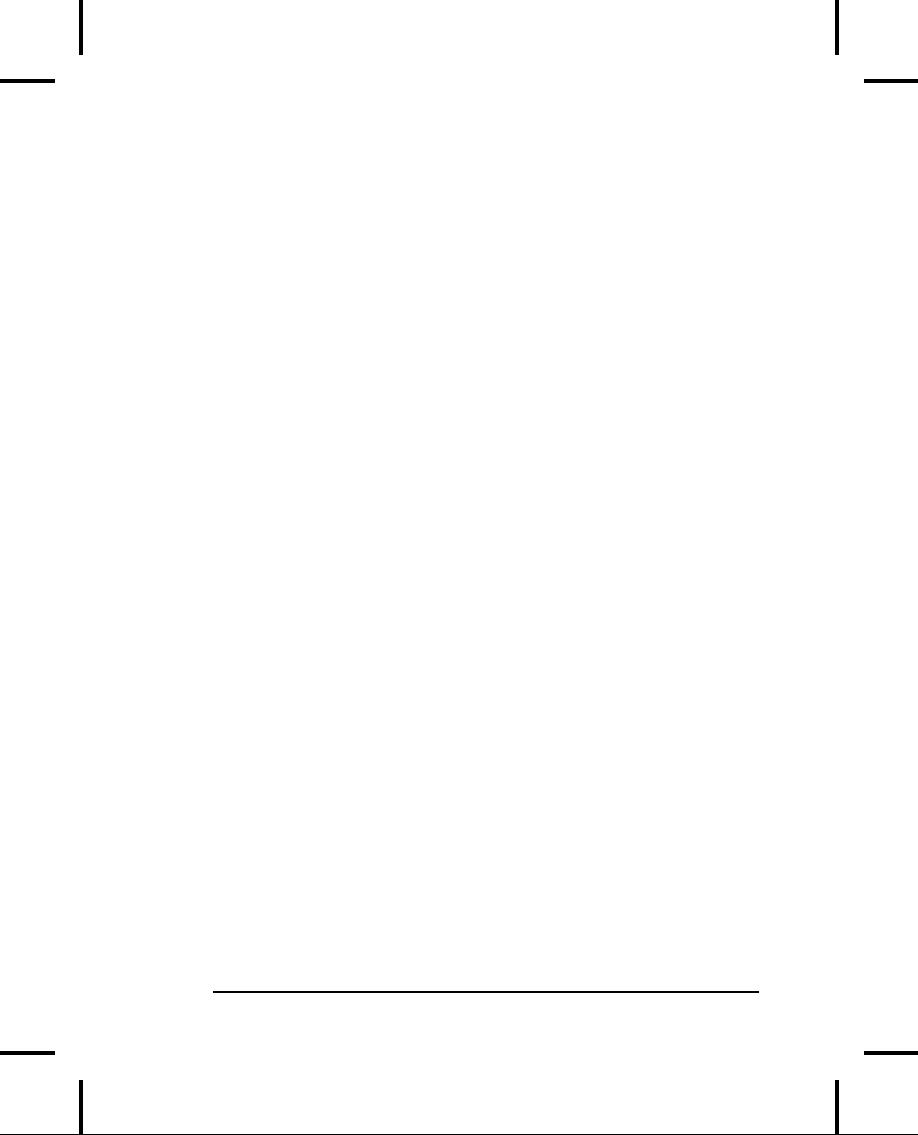
Book
design and production
The
book's interior design was
created by Daniel Will-Harris,
who
used
to play with rub-on letters in junior high
school while he
awaited
the invention of computers and
desktop publishing.
However,
I produced the camera-ready
pages myself, so the
typesetting
errors are mine.
Microsoft� Word for Windows
Versions
8 and 9 were used to write the
book and to create
camera-
ready
pages, including generating
the table of contents and
index.
(I
created a COM automation server in
Python, called from Word
VBA
macros, to aid me in index
marking.) Python (see
www.Python.org) was
used to create some of the
tools for checking
the
code, and would have been
use for the code extraction
tool had
I
discovered it earlier.
I
created the diagrams using
Visio� thanks to Visio
Corporation
for
creating a useful
tool.
The
body typeface is Georgia and the
headlines are in Verdana.
The
final
camera-ready version was
produced in Adobe� Acrobat 4 and
taken
directly to press from that
file thanks very much to
Adobe
for
creating a tool that allows
e-mailing camera-ready
documents,
as
it enables multiple revisions to be made
in a single day rather
than
relying on my laser printer and
overnight express
services.
(We
first tried the Acrobat
process with Thinking
in Java, and I
was
able
to upload the final version
of that book to the printer
in the
U.S.
from South Africa.)
The
HTML version was created by
exporting the Word
document
to
RTF, then using RTF2HTML (see http://www.sunpack.com/RTF/) to
do
most of the work of the HTML
conversion. (Thanks to
Chris
Hector
for making such a useful, and
especially reliable, tool.)
The
resulting
files were cleaned up using
a custom Python program
that
I hacked together, and the WMFs
were converted to GIFs
using
JASC� PaintShop Pro 6 and its
batch conversion tool
(thanks to
JASC
for solving so many problems for me with
their excellent
Preface
19
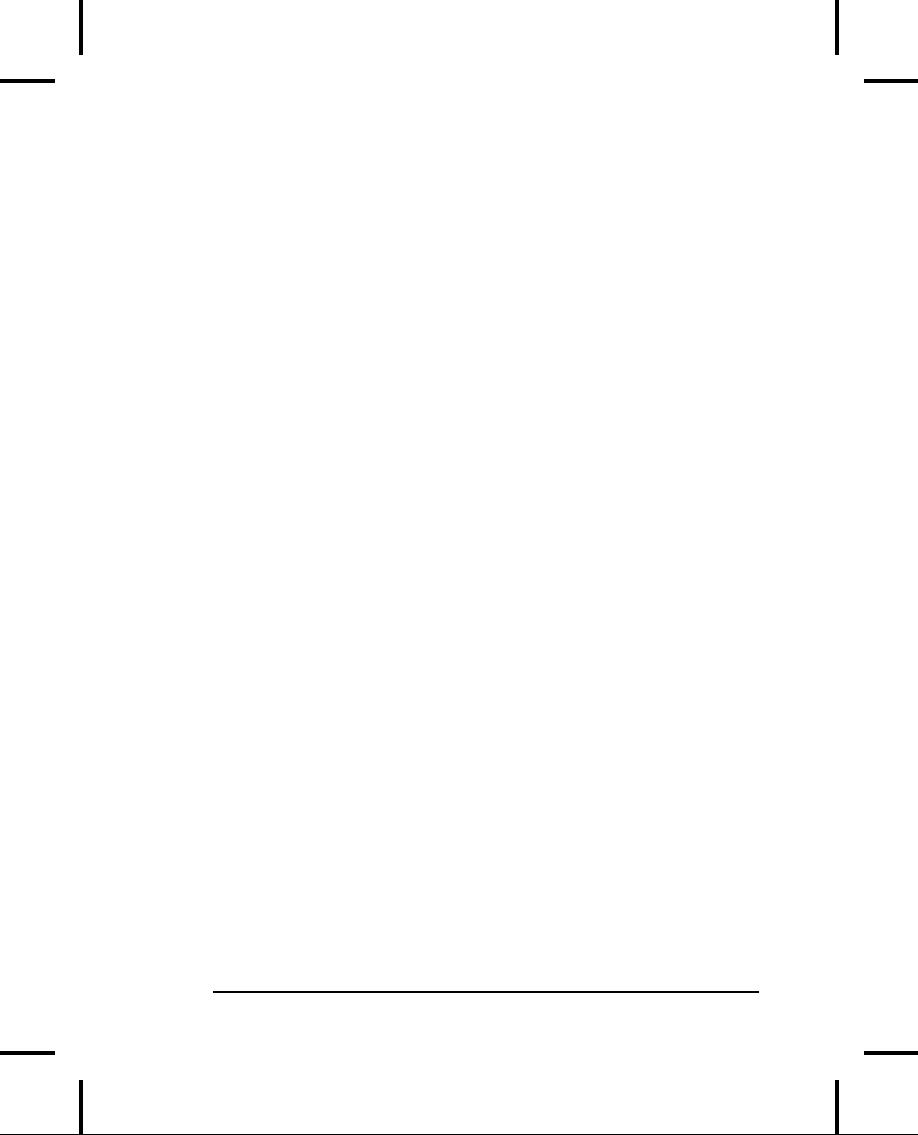
product).
The color syntax
highlighting was added via a
Perl script
kindly
contributed by Zafir Anjum.
Acknowledgements
First,
thanks to everyone on the
Internet who submitted
corrections
and
suggestions; you've been tremendously
helpful in improving
the
quality of this book, and I
couldn't have done it without
you.
Special
thanks to John Cook.
The
ideas and understanding in this
book have come from
many
sources:
friends like Chuck Allison,
Andrea Provaglio, Dan
Saks,
Scott
Meyers, Charles Petzold, and
Michael Wilk; pioneers of
the
language
like Bjarne Stroustrup, Andrew
Koenig, and Rob Murray;
members
of the C++ Standards Committee
like Nathan Myers (who
was
particularly helpful and generous with
his insights), Bill
Plauger,
Reg Charney, Tom Penello, Tom
Plum, Sam Druker, and
Uwe
Steinmueller; people who have
spoken in my C++ track at
the
Software
Development Conference; and often
students in my
seminars,
who ask the questions I need
to hear in order to make
the
material
more clear.
A
huge thank-you to my friend
Gen Kiyooka, whose
company
Digigami
has provided me with a web
server.
My
friend Richard Hale Shaw and
I have taught C++
together;
Richard's
insights and support have
been very helpful (and
Kim's,
too).
Thanks also to KoAnn Vikoren,
Eric Faurot, Jennifer
Jessup,
Tara
Arrowood, Marco Pardi,
Nicole Freeman, Barbara
Hanscome,
Regina
Ridley, Alex Dunne, and the
rest of the cast and crew
at
MFI.
A
special thanks to all my teachers and all
my students (who are
my
teachers as well).
And
for favorite writers, my deep
appreciation and sympathy for
your
efforts: John Irving, Neal
Stephenson, Robertson Davies
(we
20
Thinking
in C++
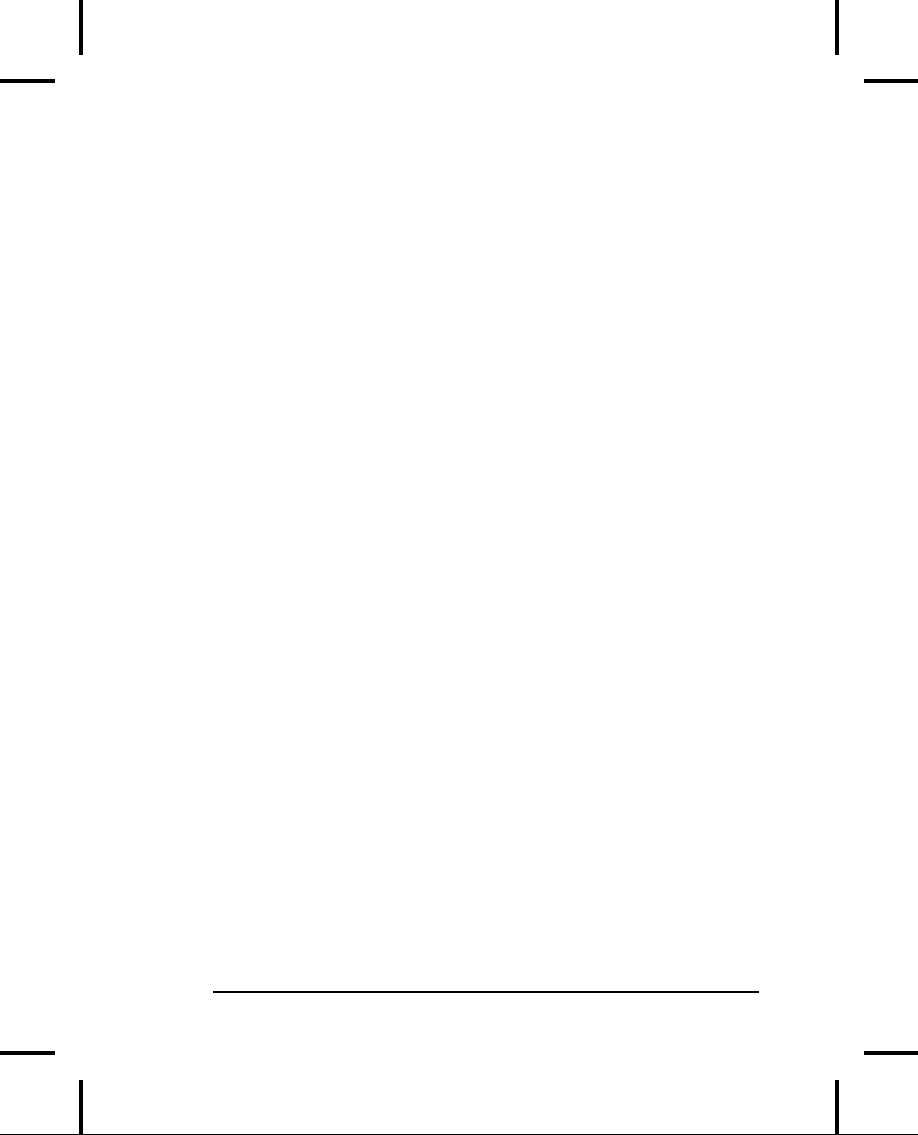
shall
miss you), Tom Robbins, William
Gibson, Richard Bach,
Carlos
Castaneda, and Gene
Wolfe.
To
Guido van Rossum, for inventing Python and
giving it selflessly
to
the world. You have enriched my
life with your contribution.
Thanks
to the people at Prentice Hall: Alan Apt,
Ana Terry, Scott
Disanno,
Toni Holm, and my electronic copy-editor
Stephanie
English.
In marketing, Bryan Gambrel and
Jennie Burger.
Sonda
Donovan helped with the
production of the CD
Rom.
Daniel
Will-Harris (of course)
created the silkscreen
design that's
on
the Disc itself.
To
all the great folks in
Crested Butte, thanks for
making it a
magical
place, especially Al Smith
(creator of the wonderful
Camp4
Coffee
Garden), my neighbors Dave &
Erika, Marsha at Heg's
Place
bookstore,
Pat & John at the
Teocalli Tamale, Sam at the
Bakery
Caf�,
and Tiller for his help with
audio research. And to all
the
terrific
people that hang out at
Camp4 in and make my
mornings
interesting.
The
supporting cast of friends
includes, but is not limited to,
Zack
Urlocker,
Andrew Binstock, Neil Rubenking, Kraig
Brockschmidt,
Steve
Sinofsky, JD Hildebrandt, Brian
McElhinney, Brinkley
Barr,
Larry
O'Brien, Bill Gates at
Midnight
Engineering Magazine, Larry
Constantine,
Lucy Lockwood, Tom Keffer, Dan Putterman,
Gene
Wang,
Dave Mayer, David
Intersimone, Claire Sawyers,
the Italians
(Andrea
Provaglio, Rossella Gioia,
Laura Fallai, Marco &
Lella
Cantu,
Corrado, Ilsa and Christina
Giustozzi), Chris and
Laura
Strand
(and Parker), the Almquists,
Brad Jerbic, Marilyn
Cvitanic,
the
Mabrys, the Haflingers, the
Pollocks, Peter Vinci, the
Robbins,
the
Moelters, Dave Stoner,
Laurie Adams, the Cranstons,
Larry
Fogg,
Mike and Karen Sequeira, Gary Entsminger
and Allison
Brody,
Kevin, Sonda, & Ella
Donovan, Chester and
Shannon
Andersen,
Joe Lordi, Dave and Brenda
Bartlett, the
Rentschlers,
Lynn
and Todd, and their families. And of
course, Mom and Dad.
Preface
21
Table of Contents:
- Introduction to Objects:The progress of abstraction, Extreme programming
- Making & Using Objects:Tools for separate compilation, Reading and writing files
- The C in C++:Creating functions, Controlling execution, Introduction to operators
- Data Abstraction:The basic object, Abstract data typing, Header file etiquette
- Hiding the Implementation:C++ access control, Handle classes
- Initialization & Cleanup:Guaranteed cleanup with the destructor, Aggregate initialization
- Function Overloading & Default Arguments:Overloading example, Default arguments
- Constants:Function arguments & return values, Classes, volatile
- Inline Functions:Preprocessor pitfalls, Stash & Stack with inlines, Reducing clutter
- Name Control:Static elements from C, Static initialization dependency, specifications
- References & the Copy-Constructor:The copyconstructor, Pointers to members
- Operator Overloading:Overloadable operators, Overloading assignment
- Dynamic Object Creation:Early examples redesigned, new & delete for arrays
- Inheritance & Composition:The constructor initializer list, Name hiding
- Polymorphism & Virtual Functions:The problem, How C++ implements late binding
- Introduction to Templates:Template syntax, Stack and Stash as templates
- A: Coding Style
- B: Programming Guidelines
- C: Recommended Reading:Depth & dark corners, Analysis & design
- Index